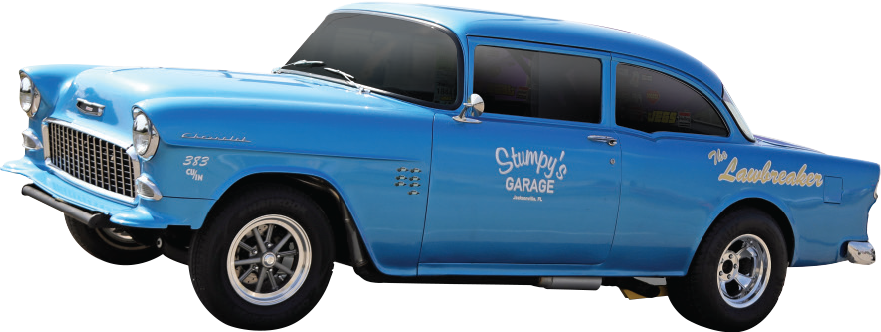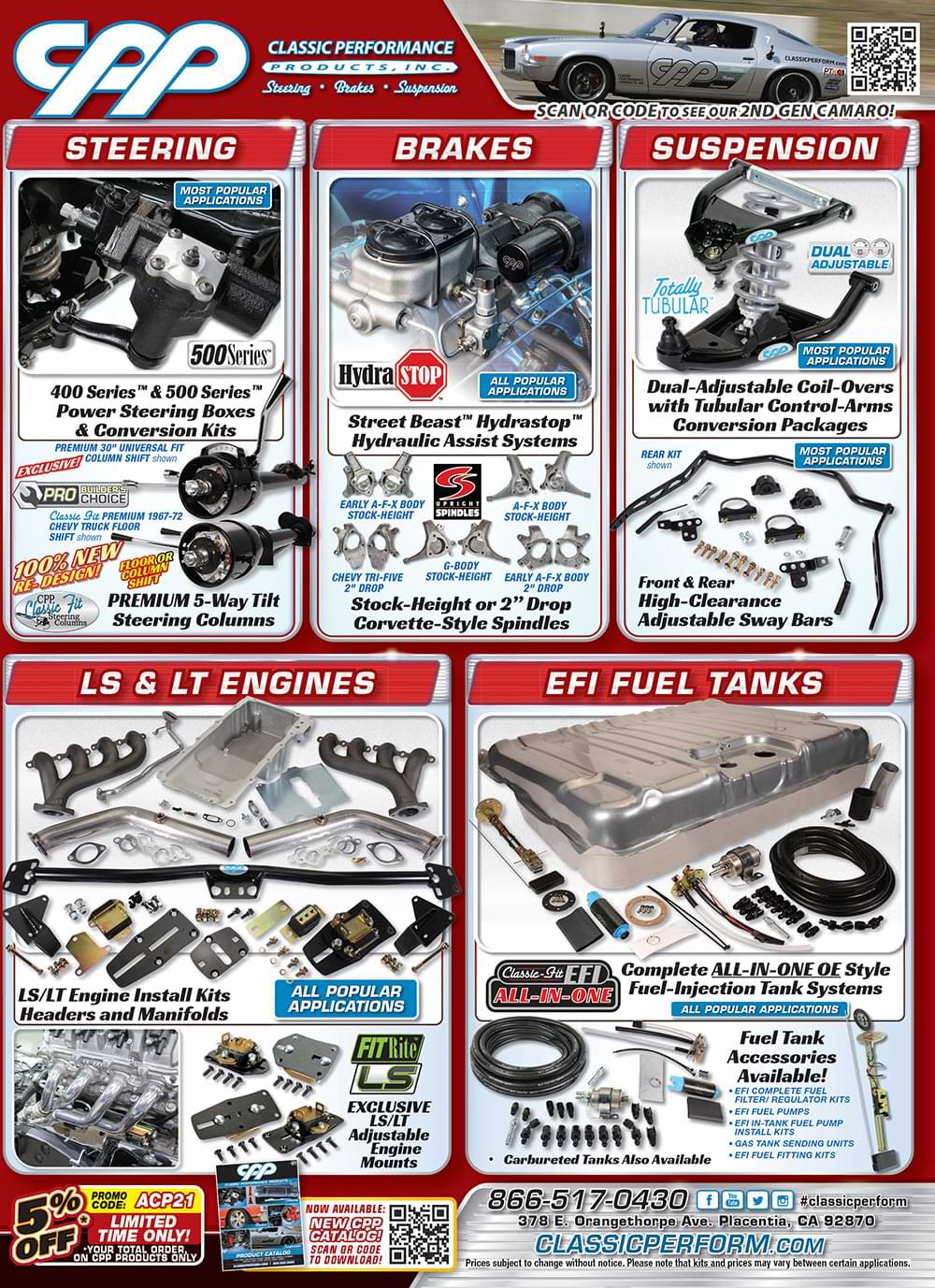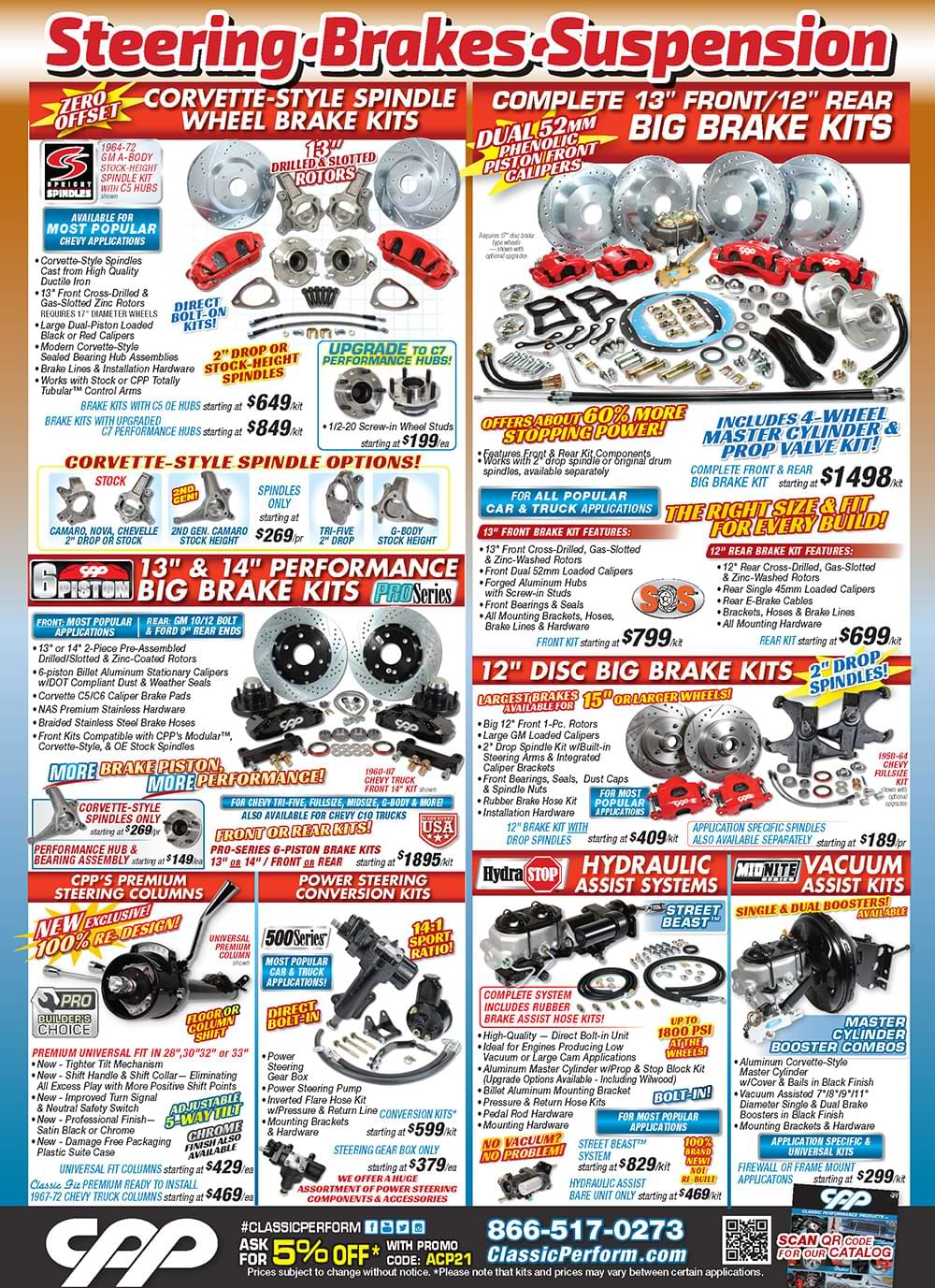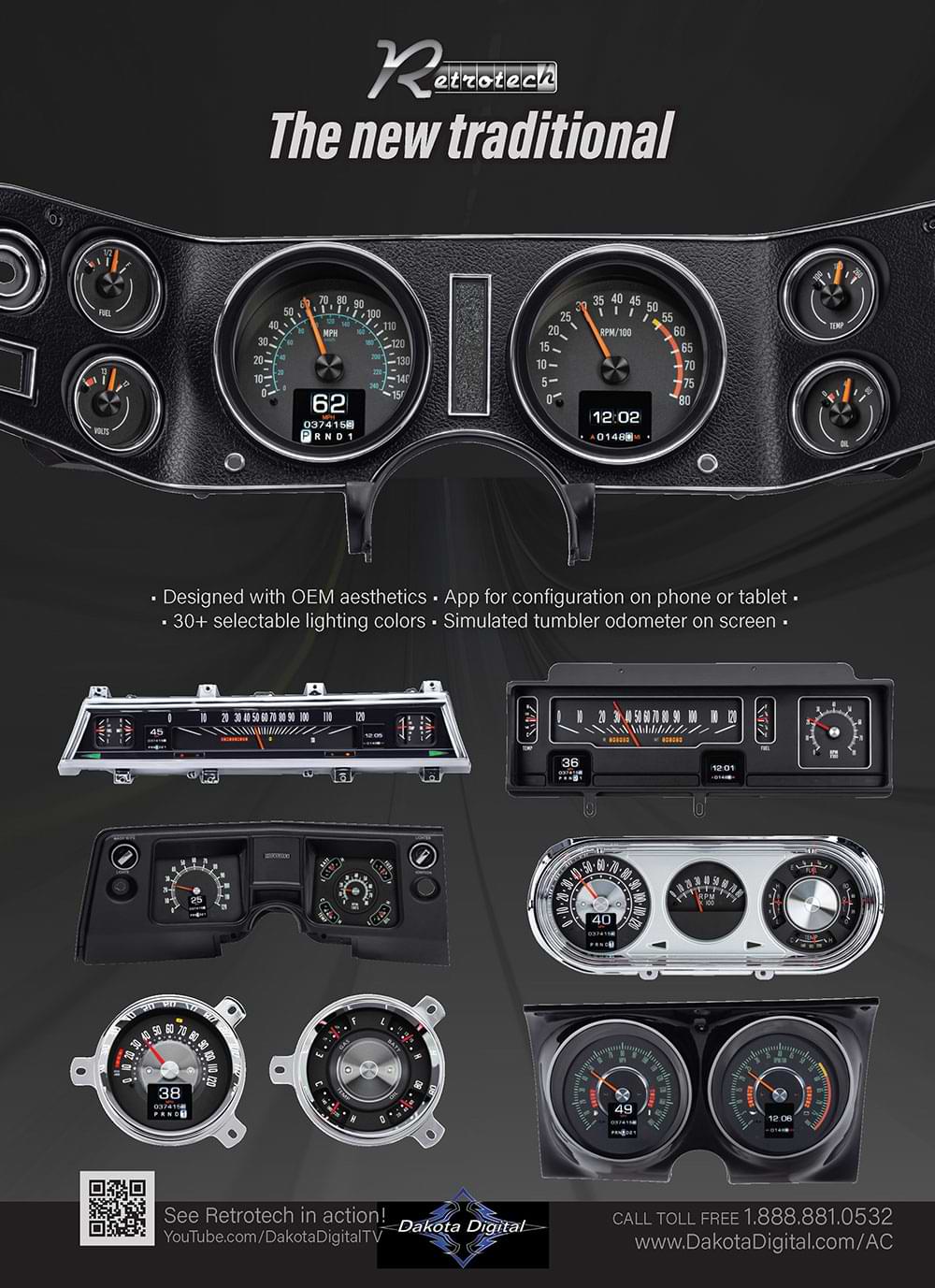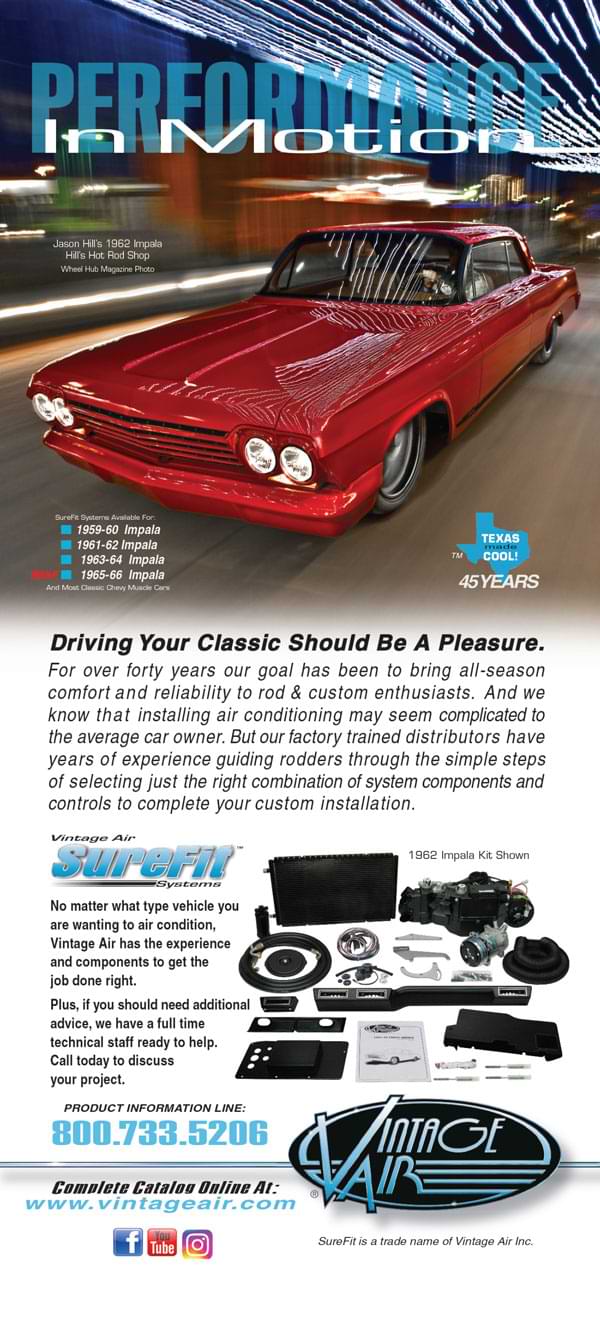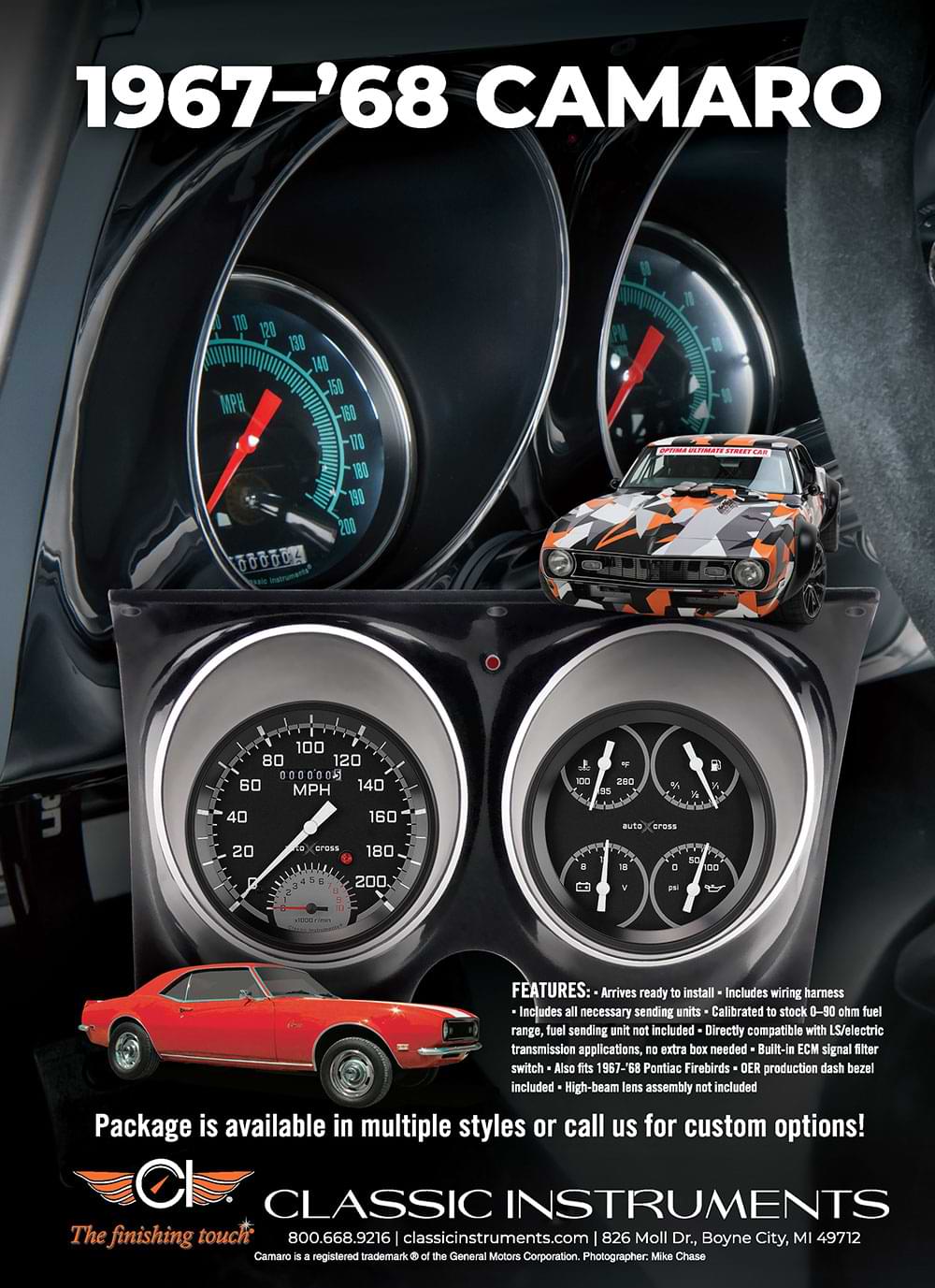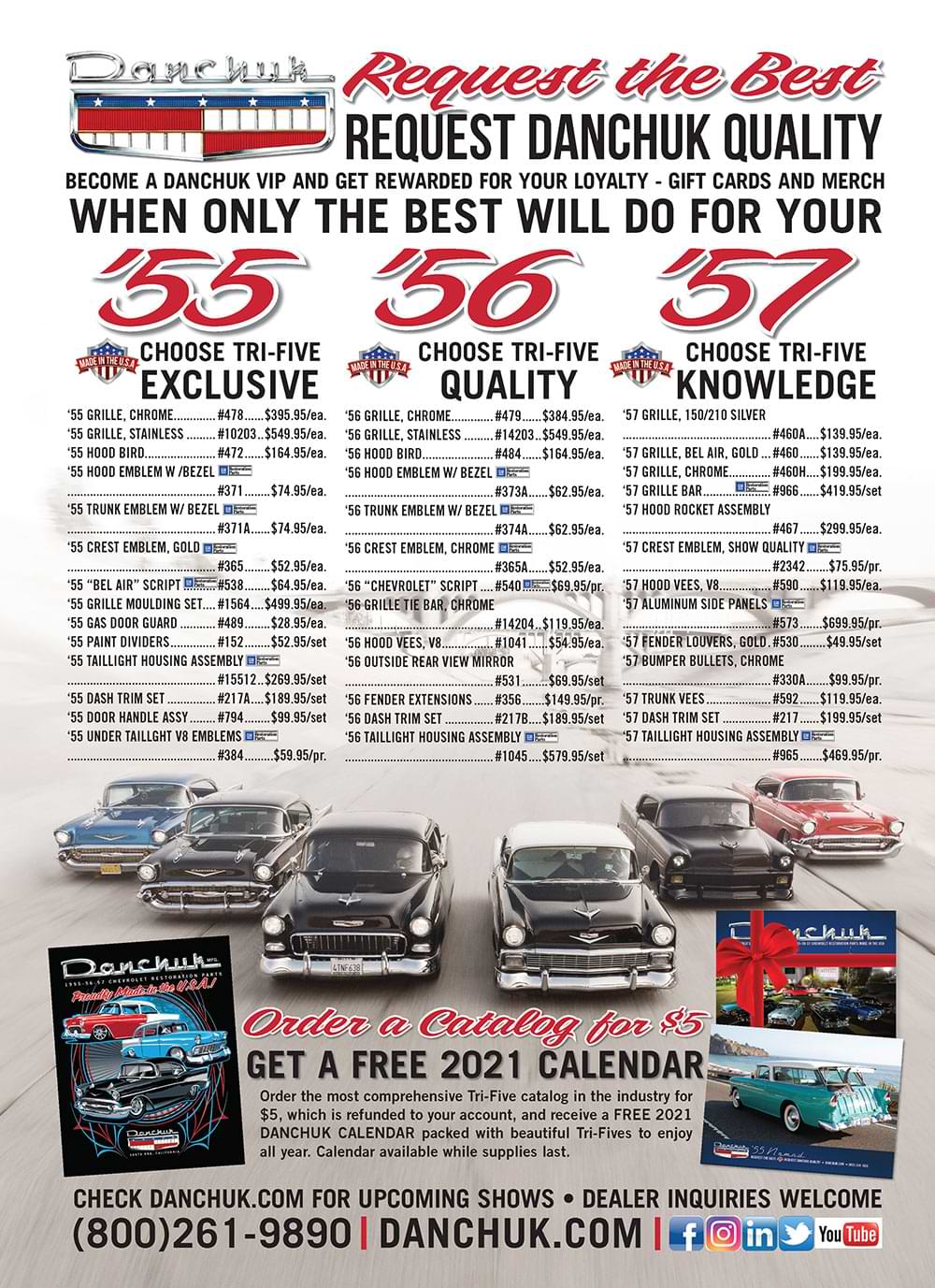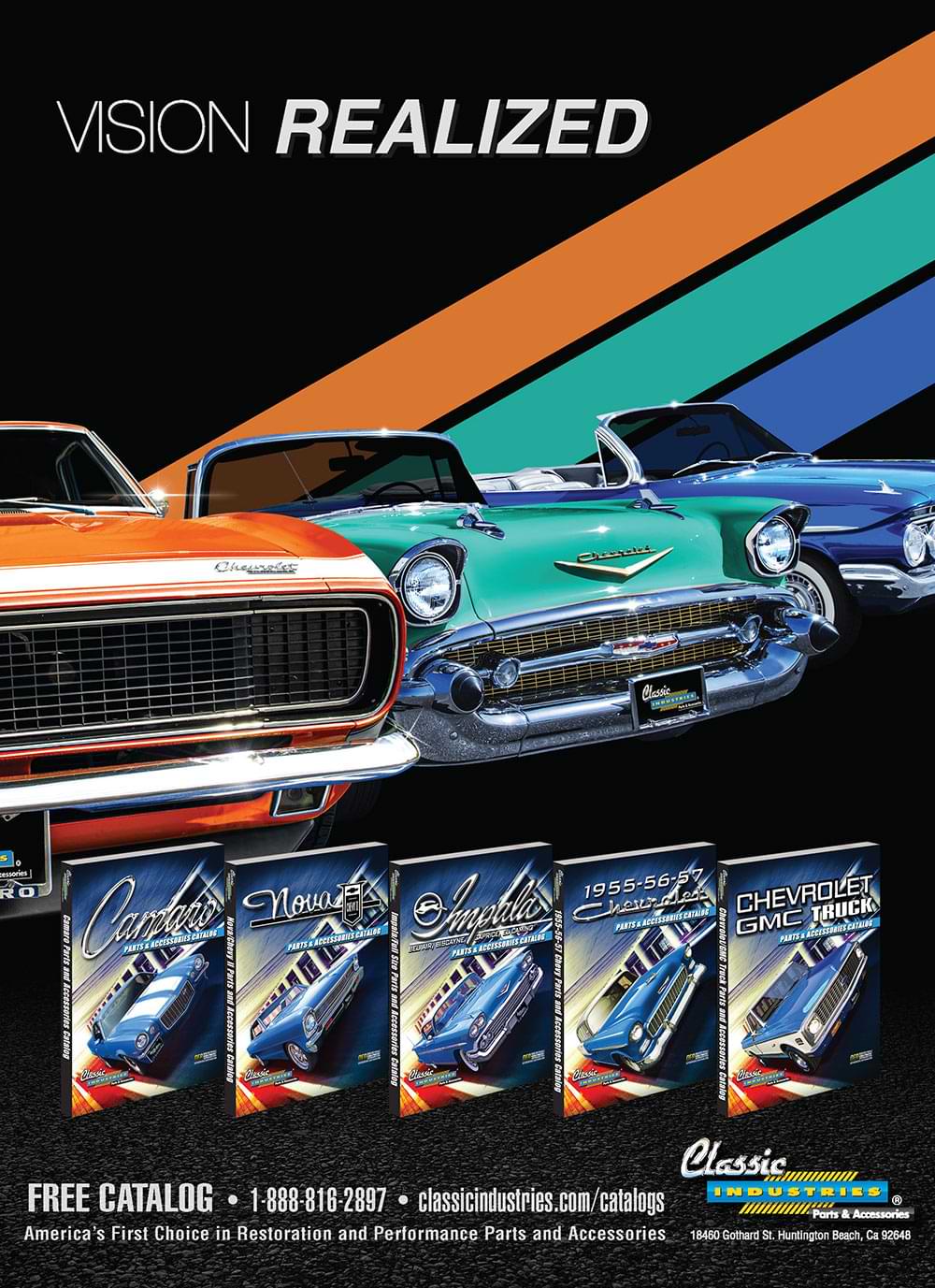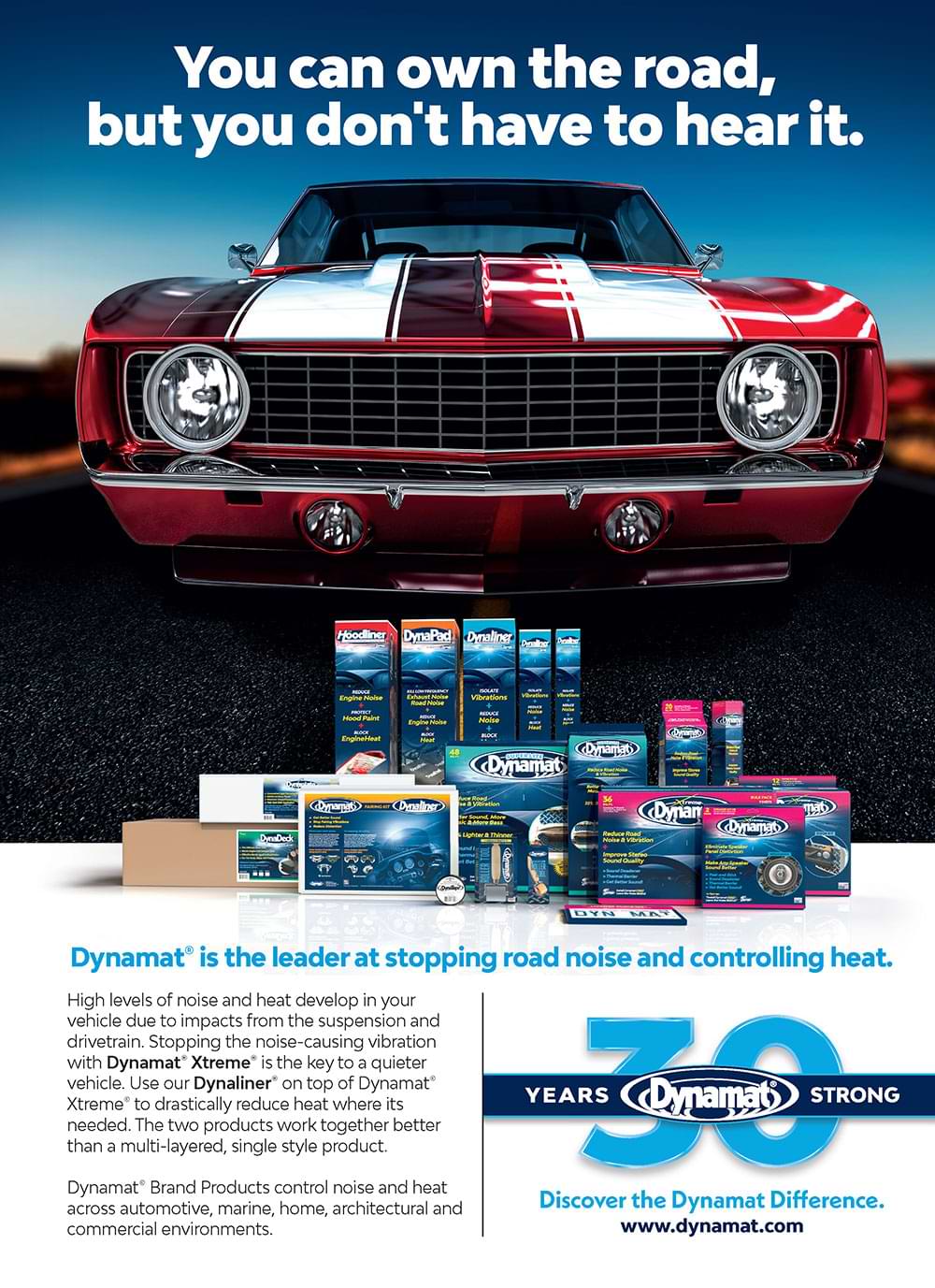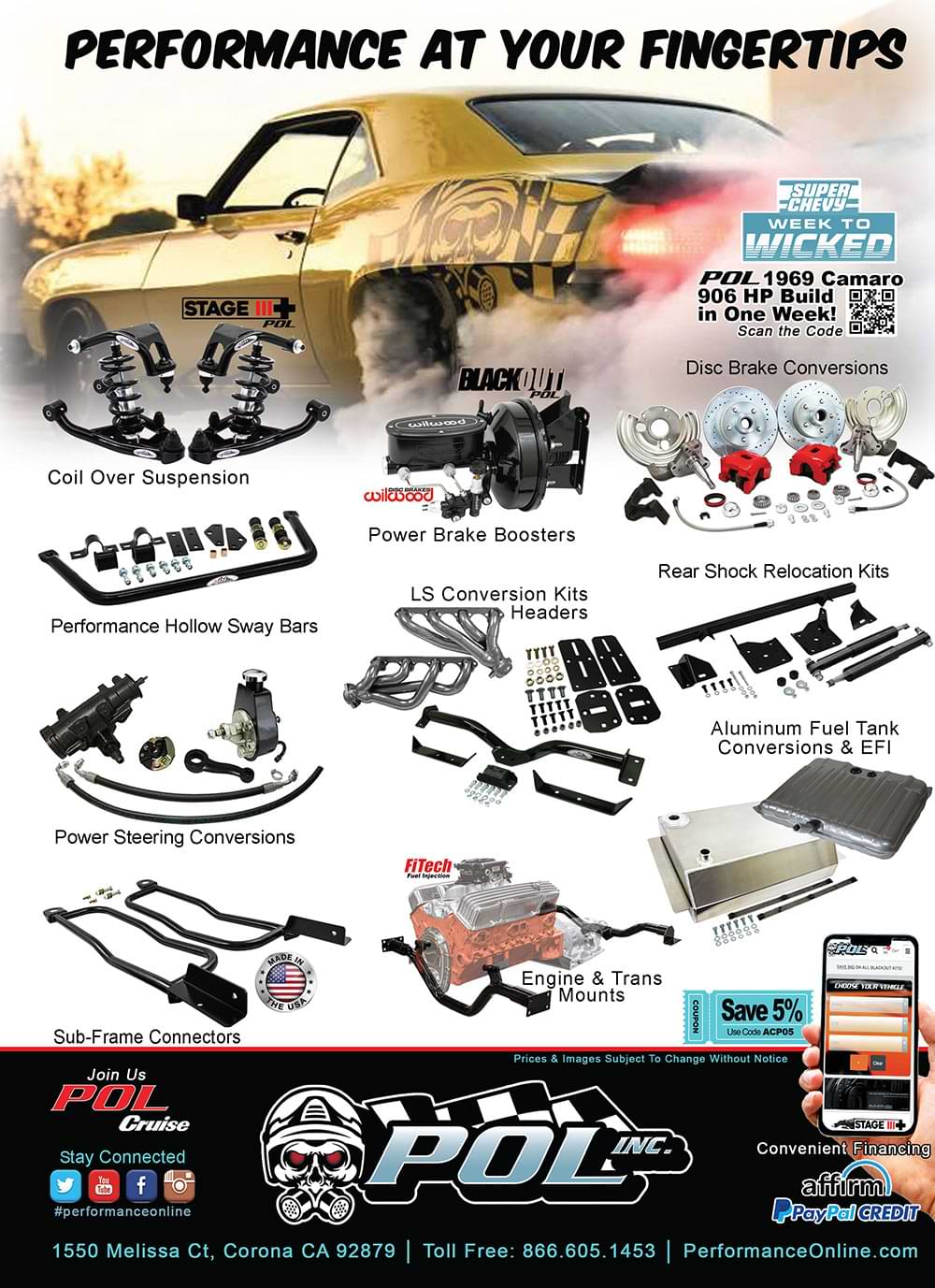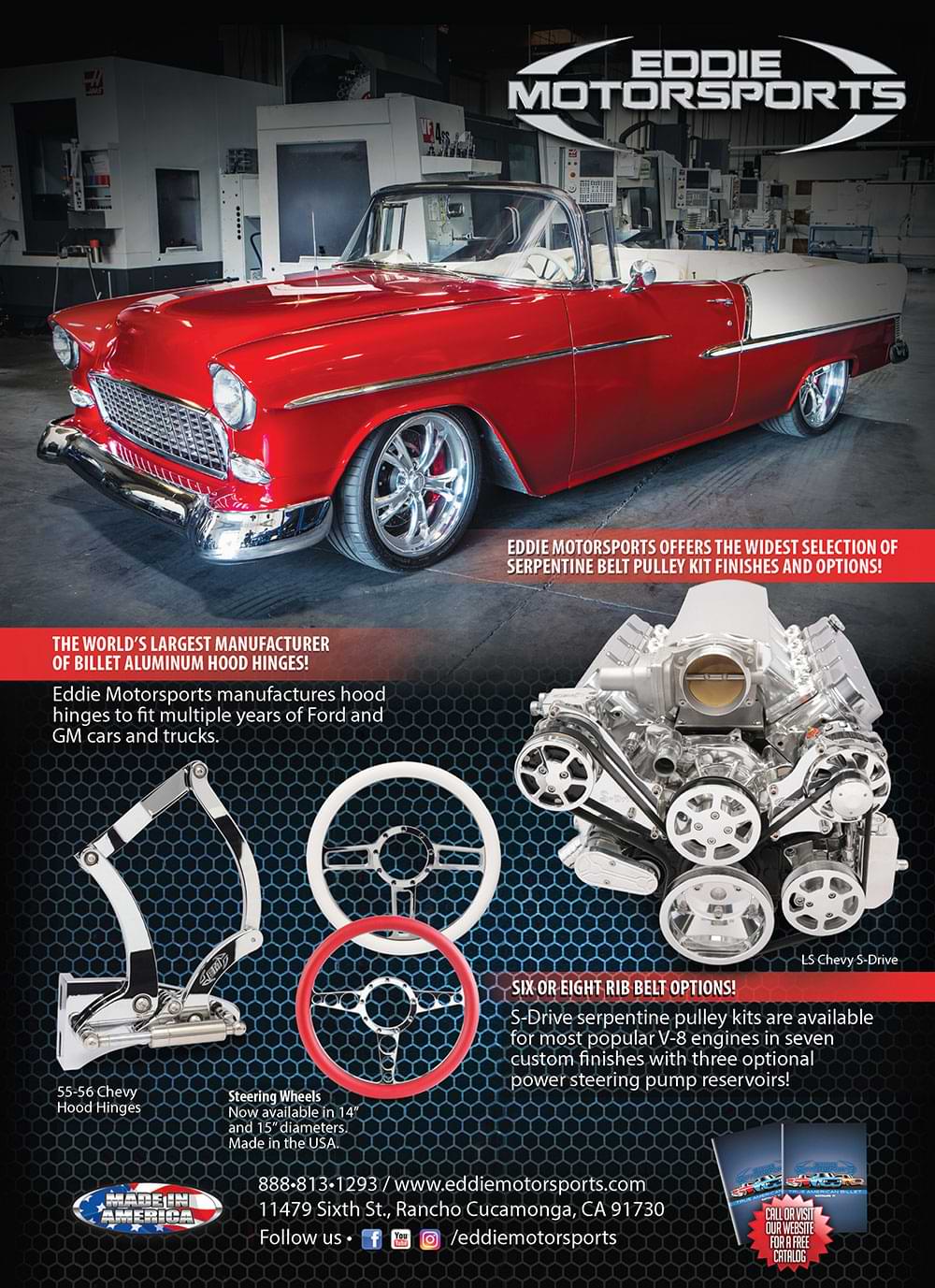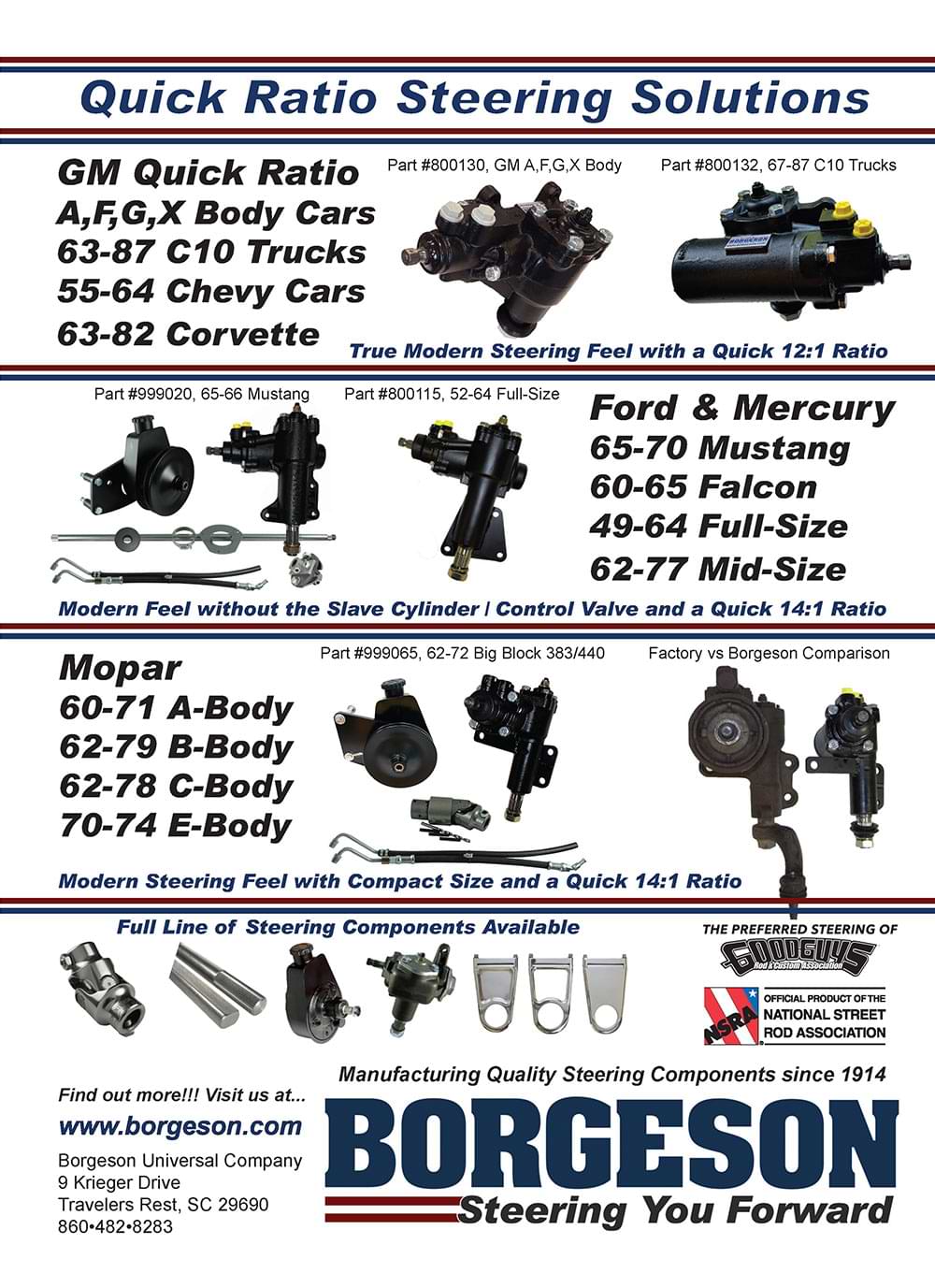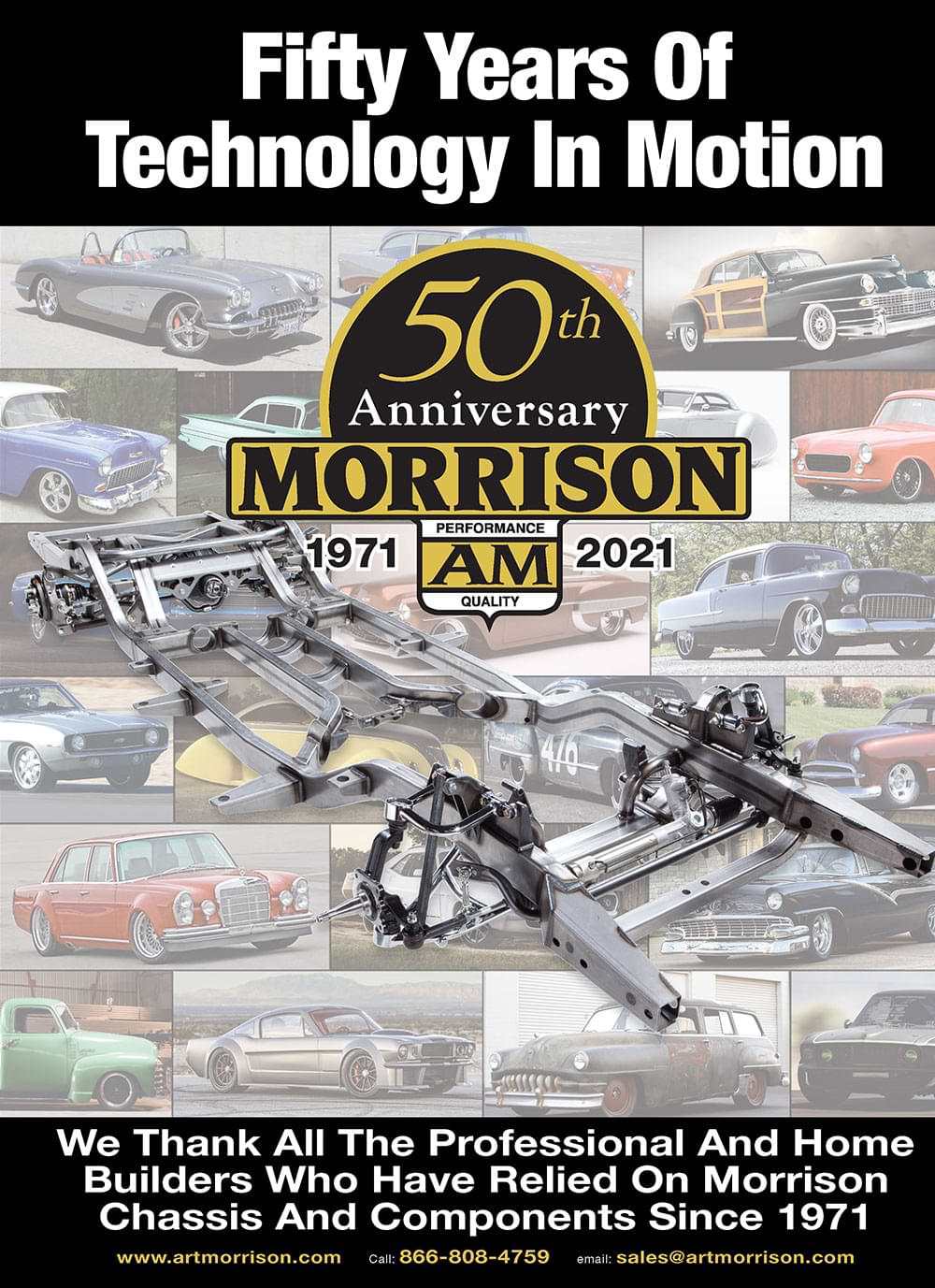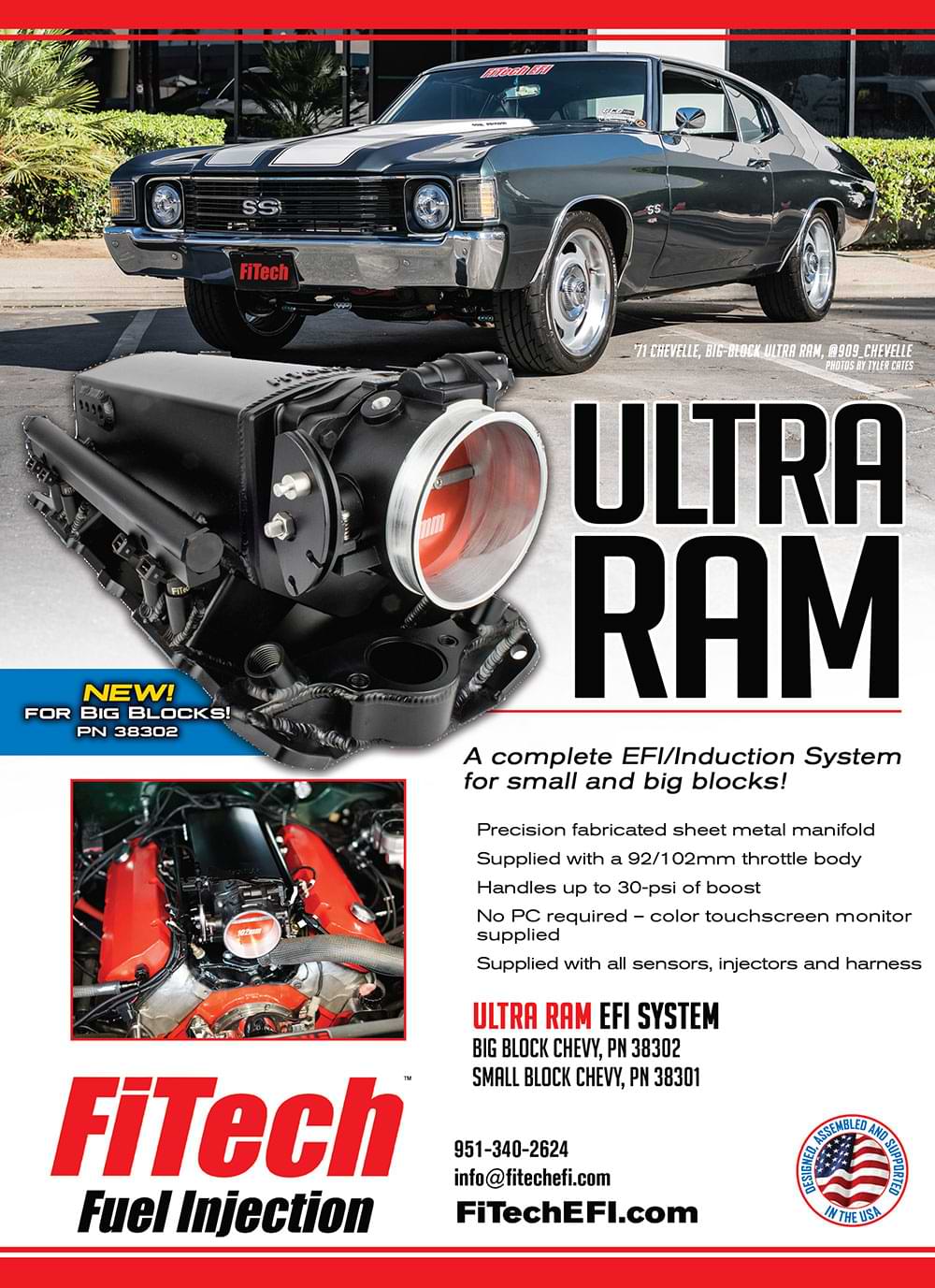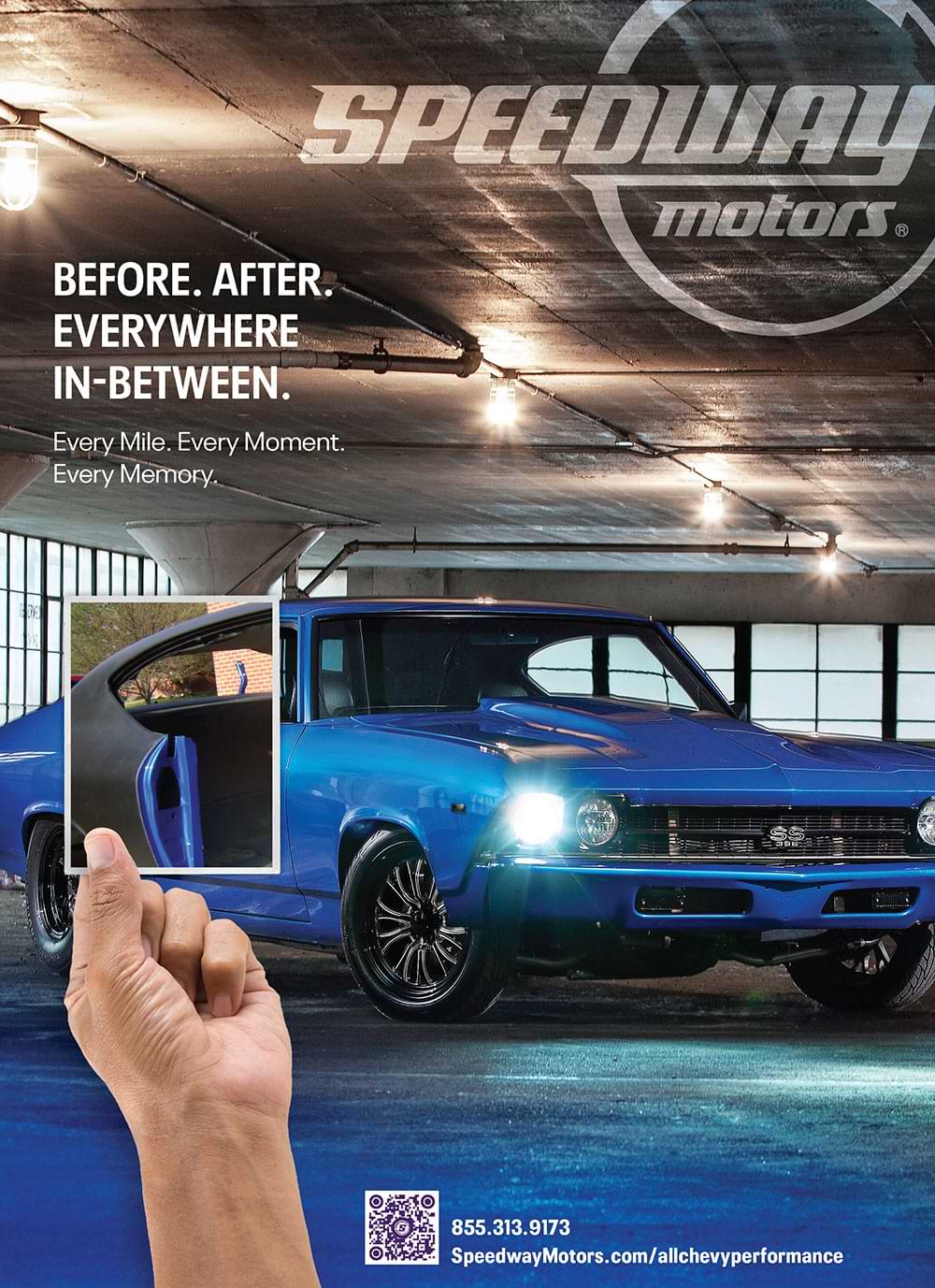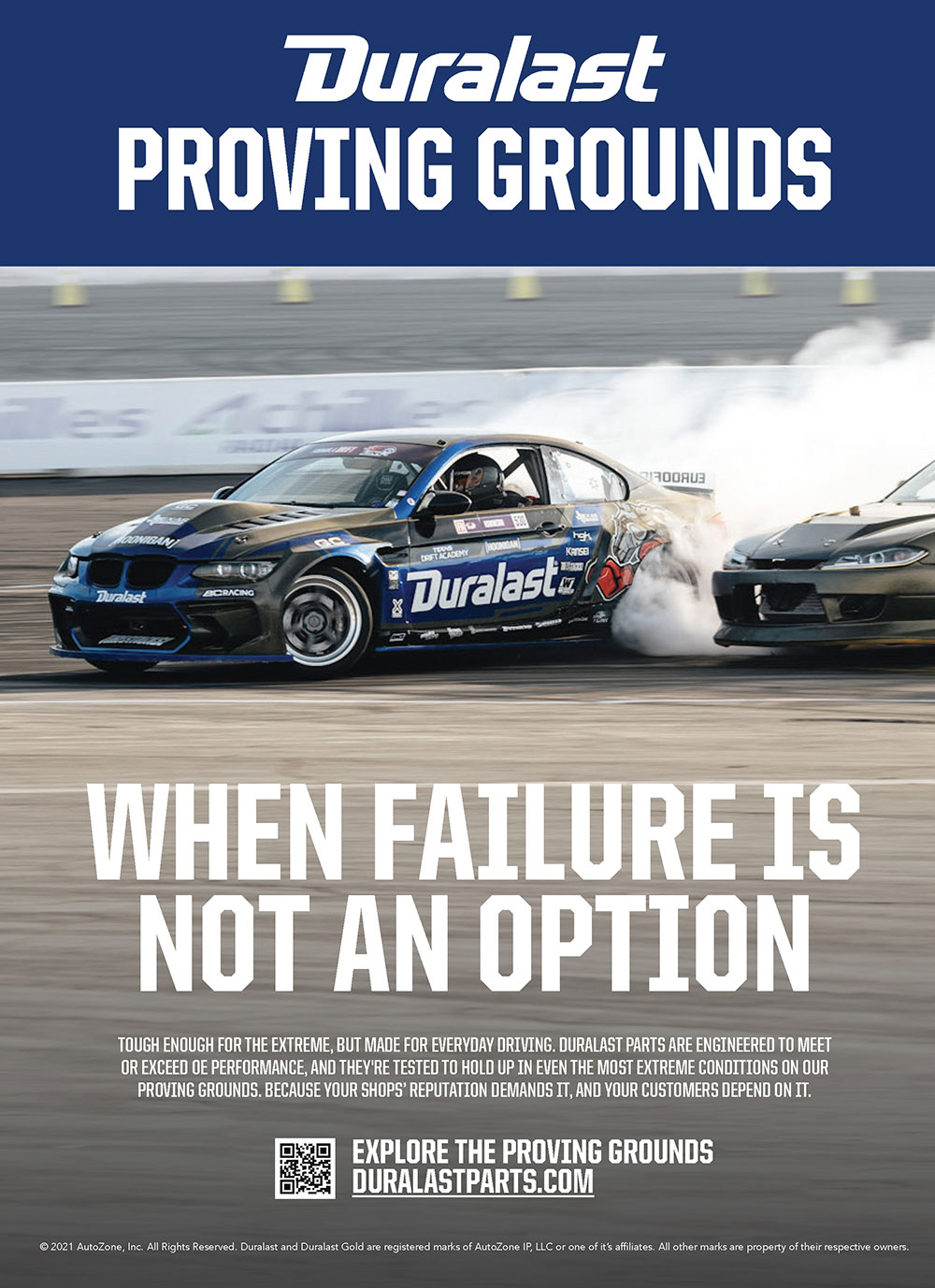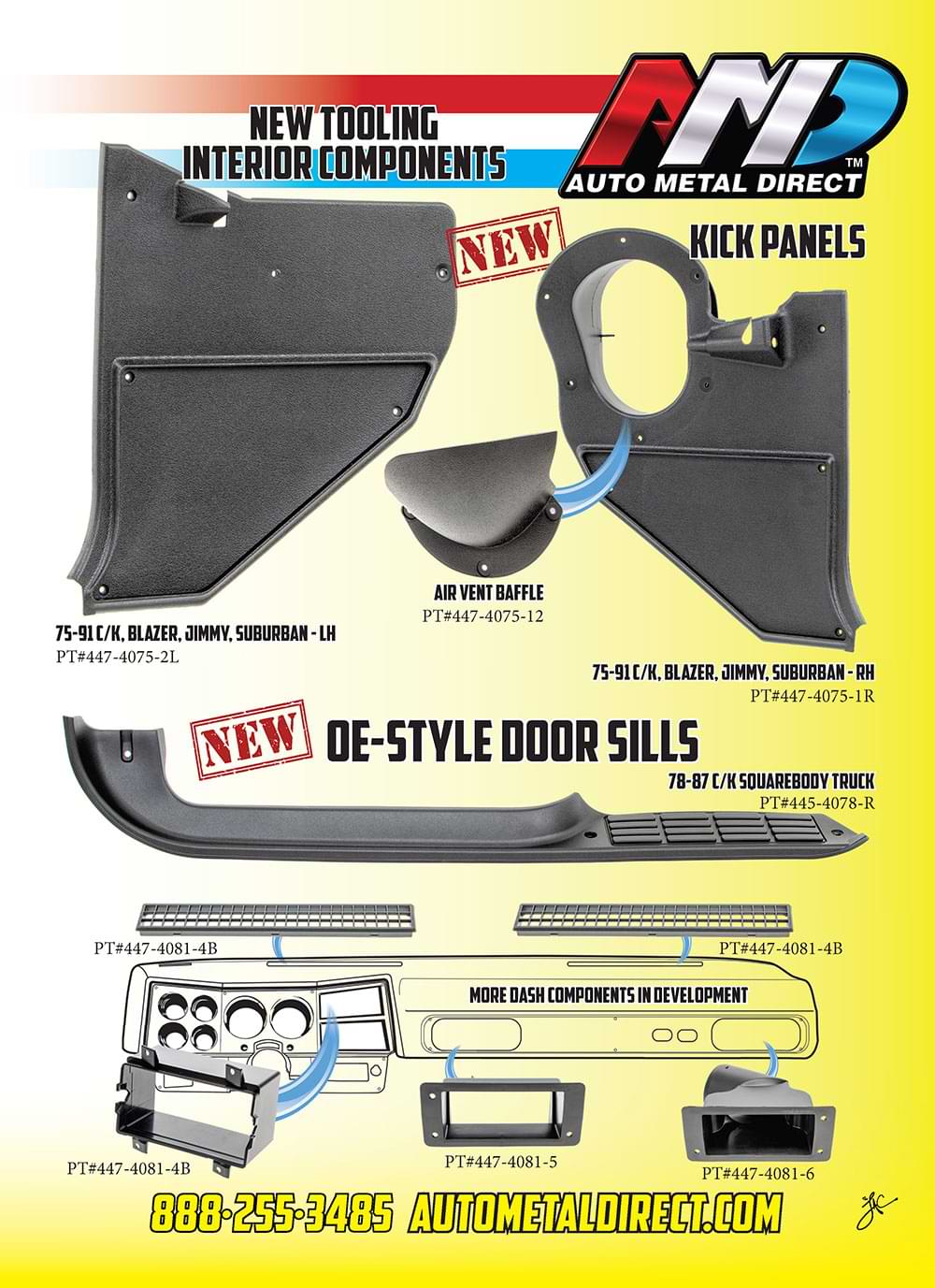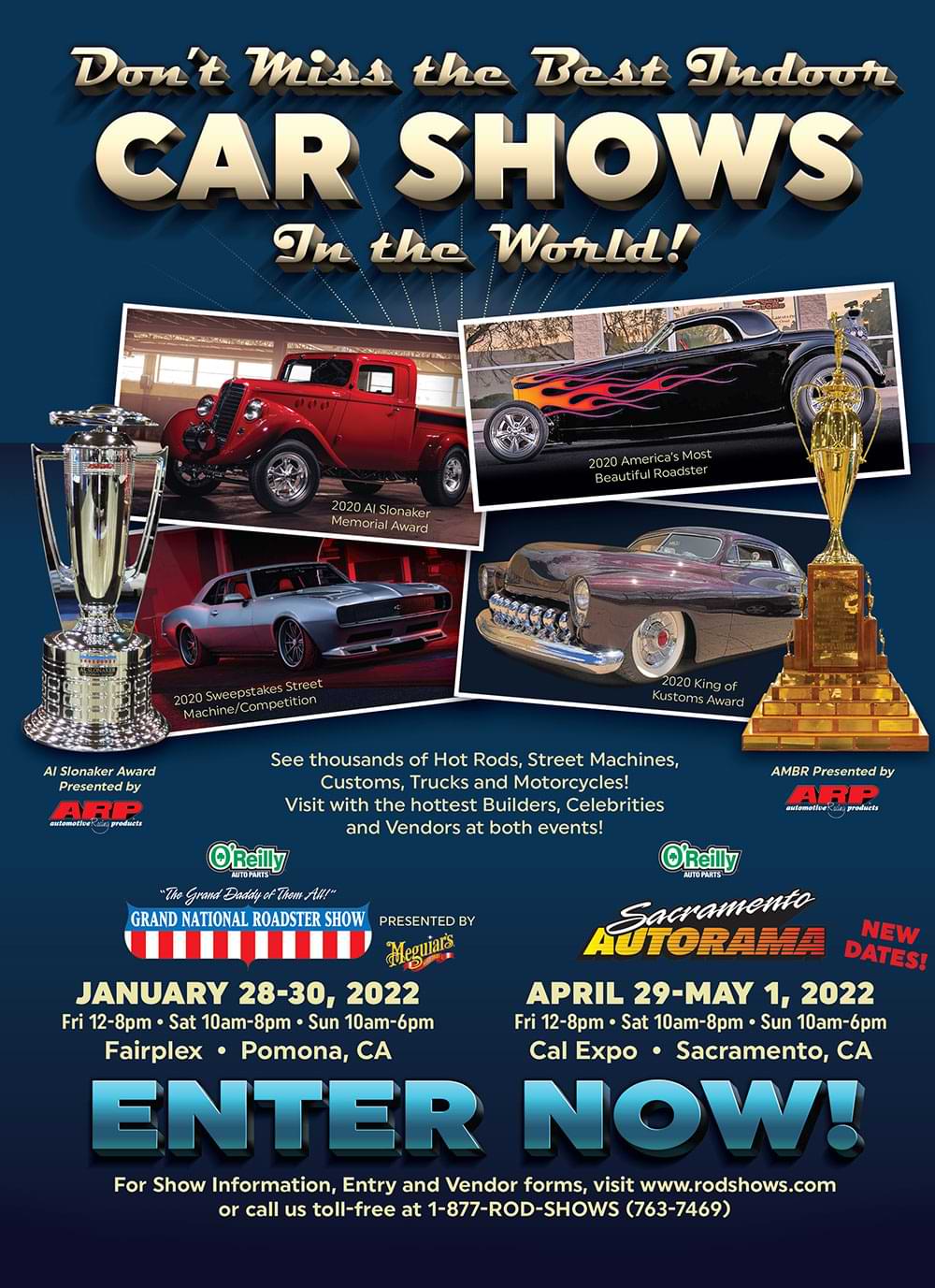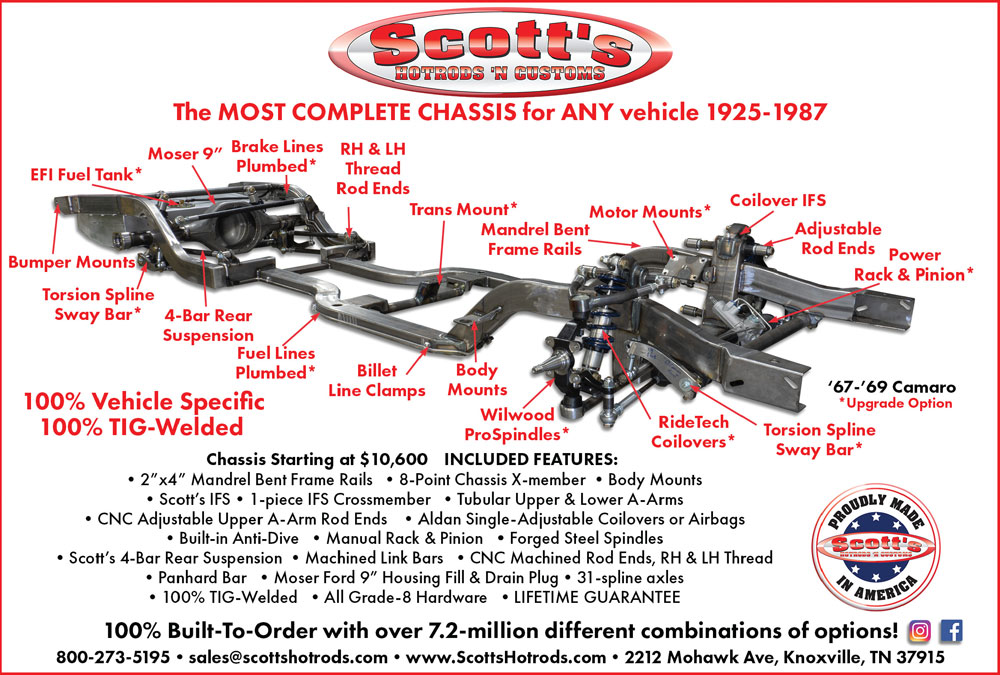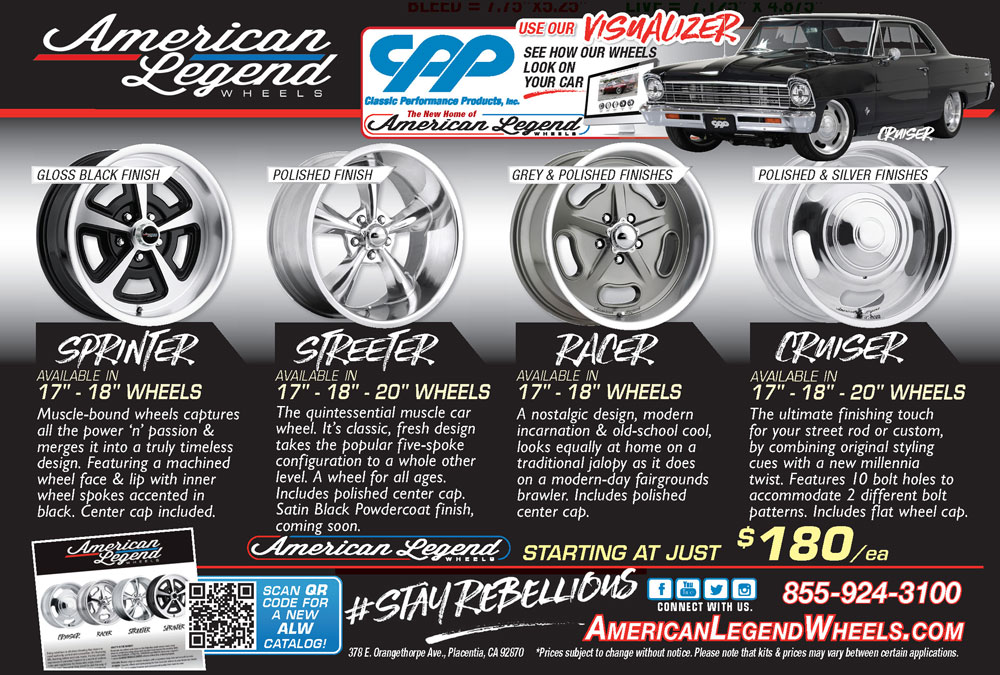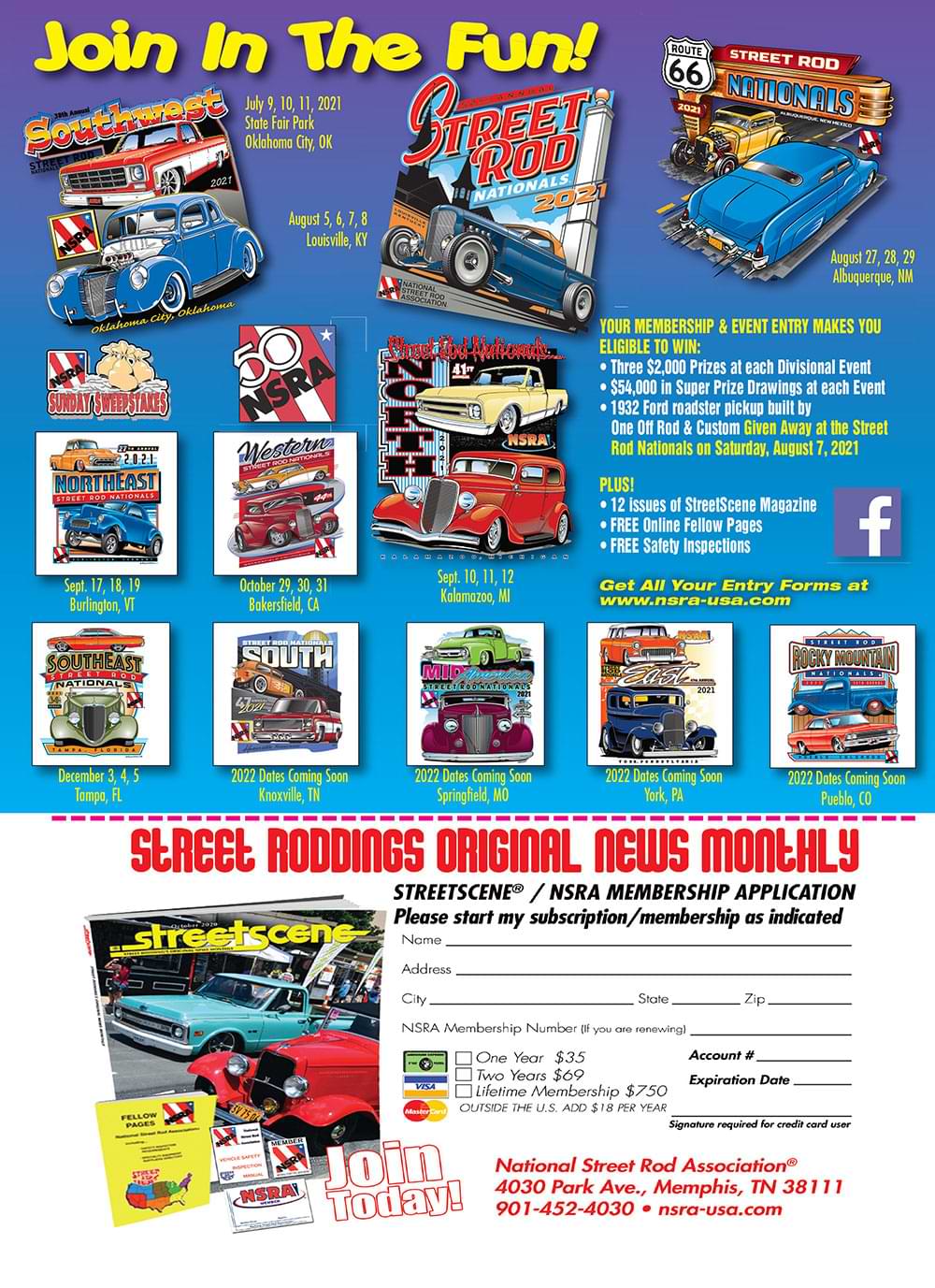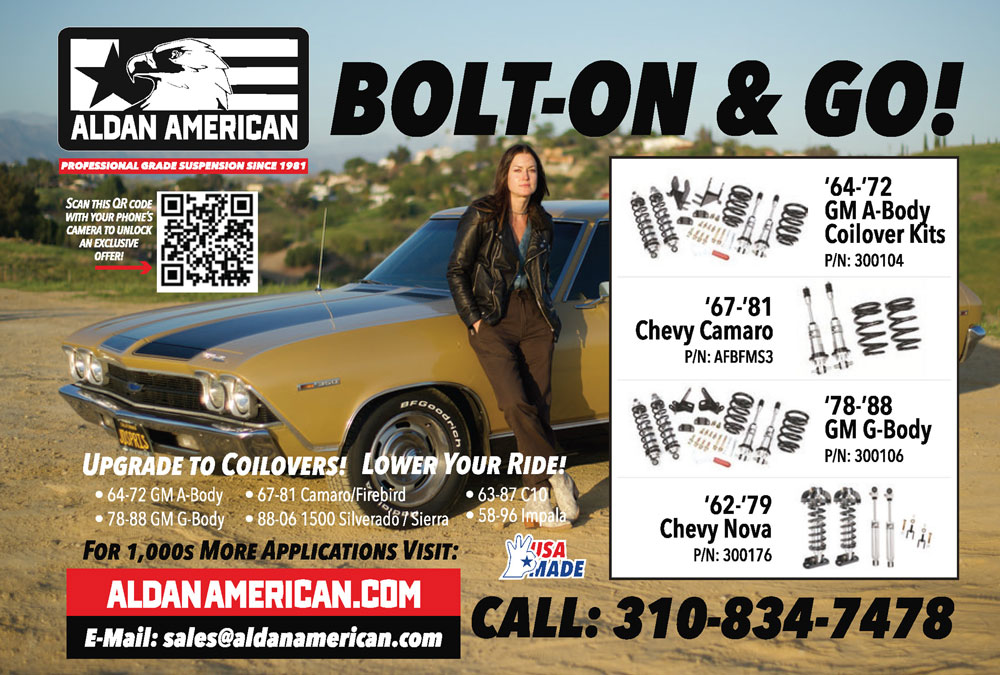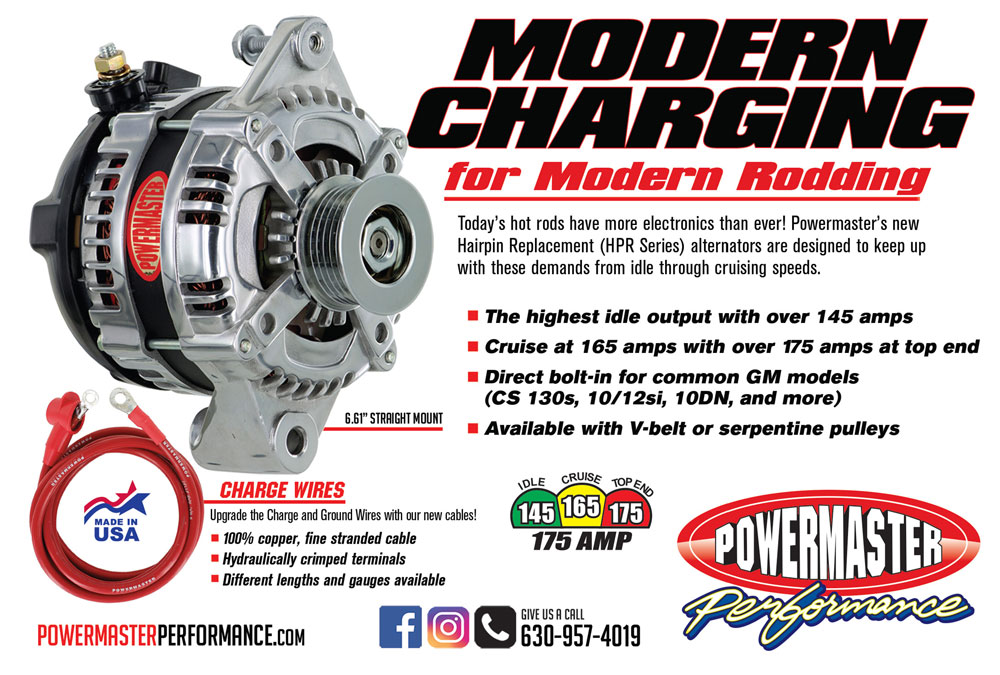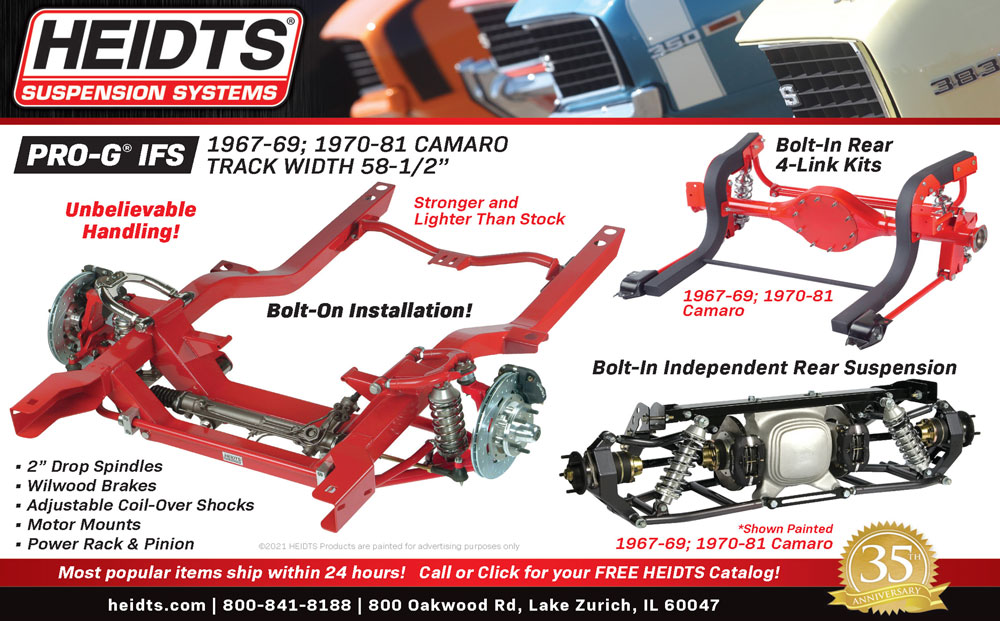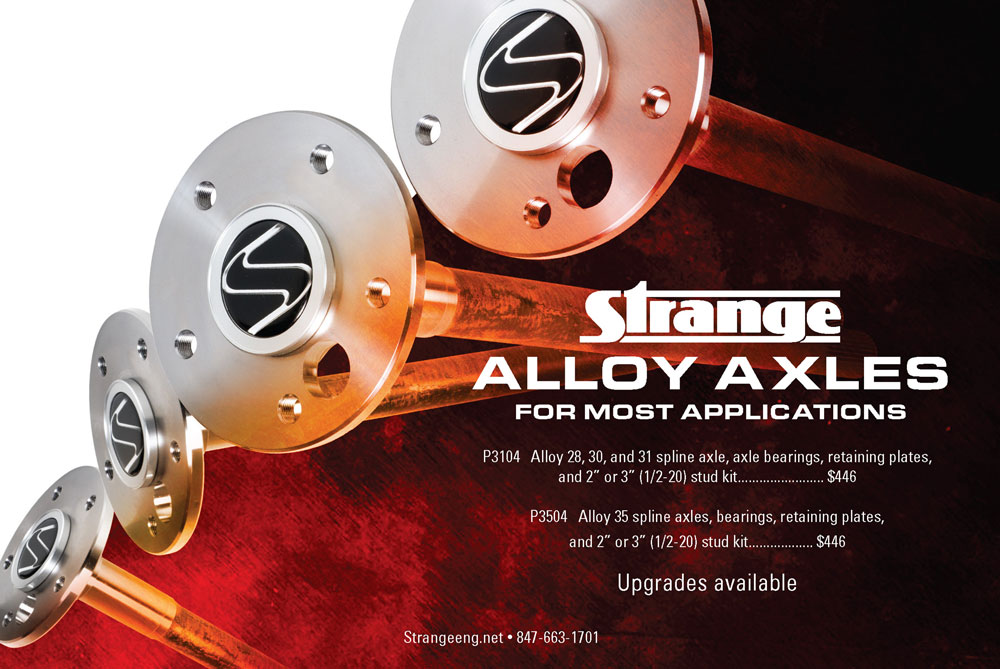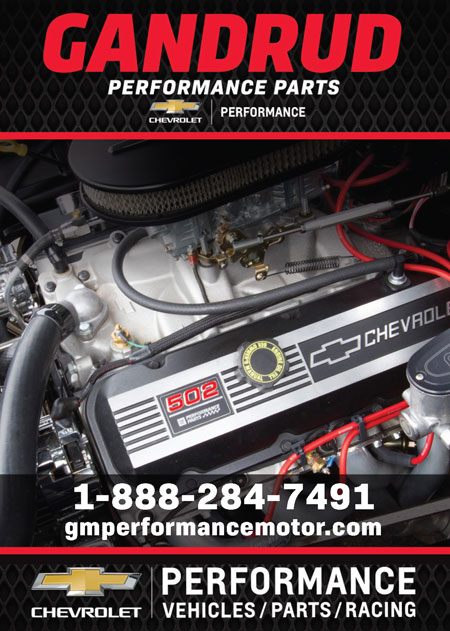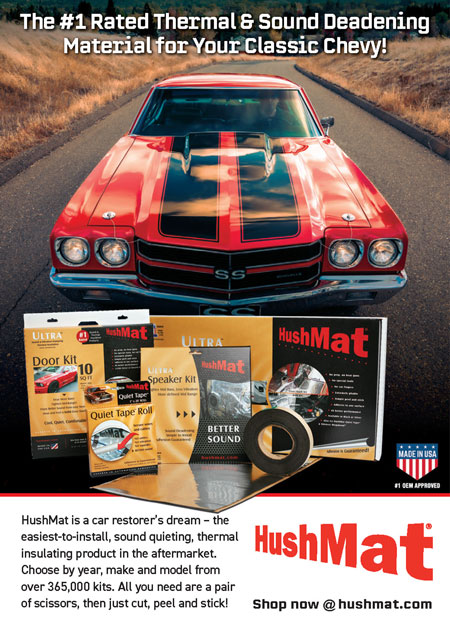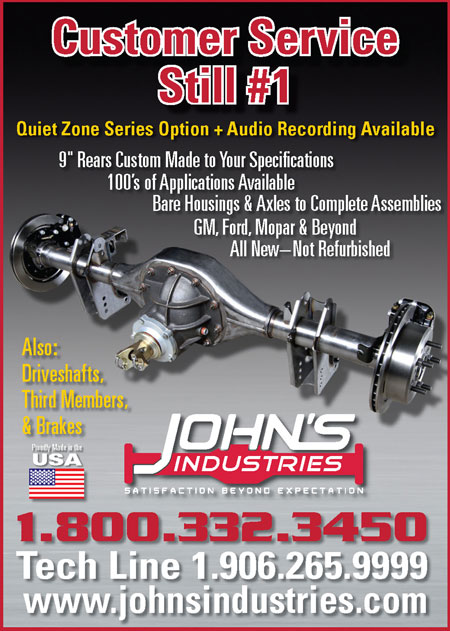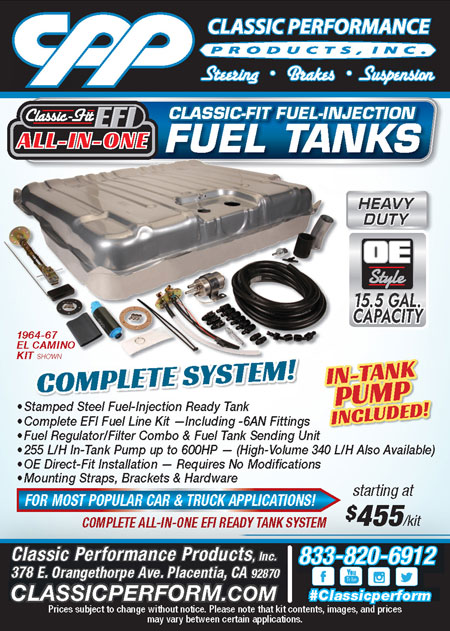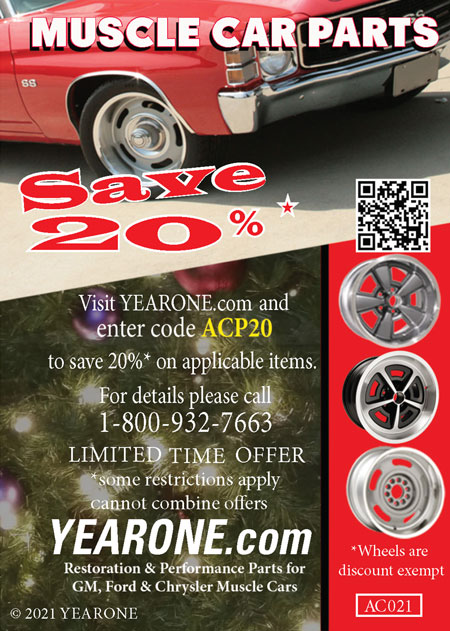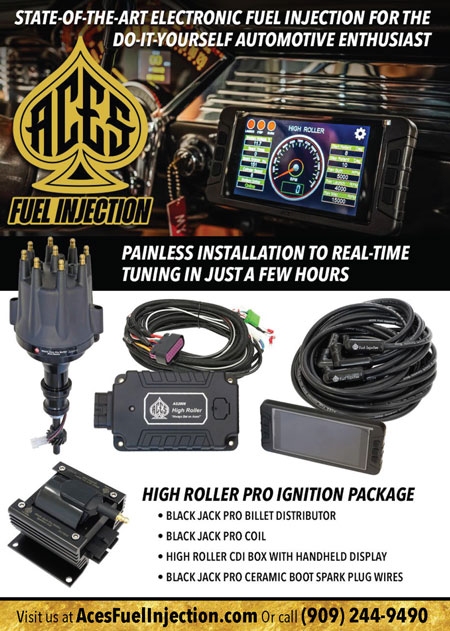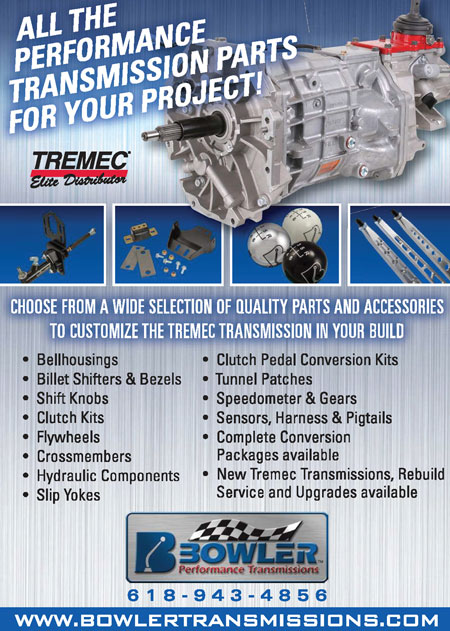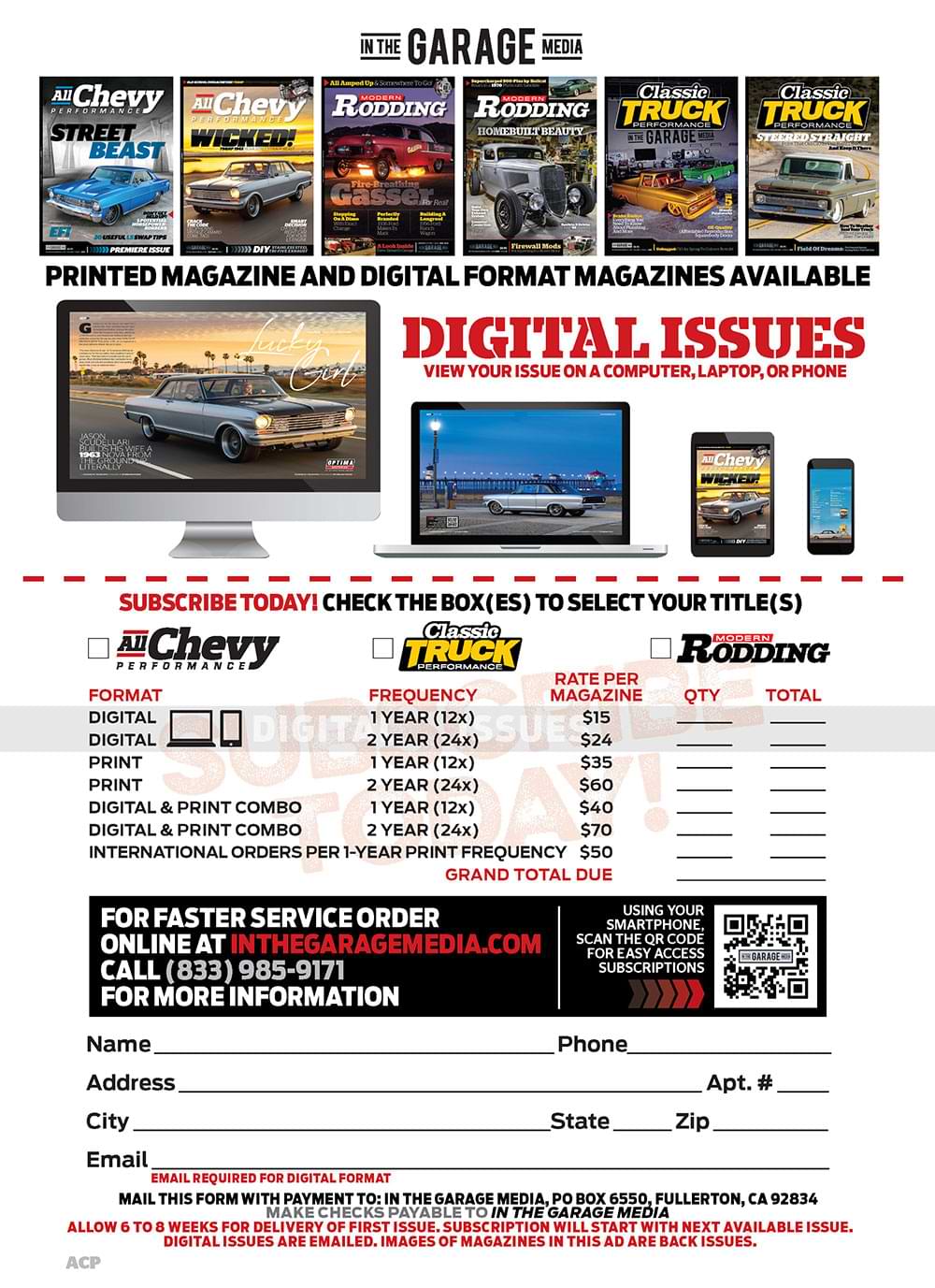Swap, Part 2
The Finishing
Touches
Gauge
Upgrade
Classic Style
Meets Modern
Function
Build, Part 4
Dialing in
the Heads &
Valvetrain
The Finishing Touches
Classic Style Meets Modern Function
Dialing in the Heads & Valvetrain
 TOC
TOC




ROB MUNOZ
Wes Allison, Tommy Lee Byrd, Ron Ceridono, Grant Cox, Dominic Damato, Tavis Highlander, Jeff Huneycutt, Barry Kluczyk, Scotty Lachenauer, Jason Lubken, Steve Magnante, Ryan Manson, Jason Matthew, Josh Mishler, Evan Perkins, Richard Prince, Todd Ryden, Jason Scudellari, Jeff Smith, Tim Sutton, and Chuck Vranas – Writers and Photographers
AllChevyPerformance.com
ClassicTruckPerformance.com
ModernRodding.com
InTheGarageMedia.com
subscriptions@inthegaragemedia.com
Mark Dewey National Sales Manager
Patrick Walsh Sales Representative
Travis Weeks Sales Representative
ads@inthegaragemedia.com
inthegaragemedia.com “Online Store”
info@inthegaragemedia.com

Copyright (c) 2021 IN THE GARAGE MEDIA.
PRINTED IN U.S.A

 FIRING UP
FIRING UP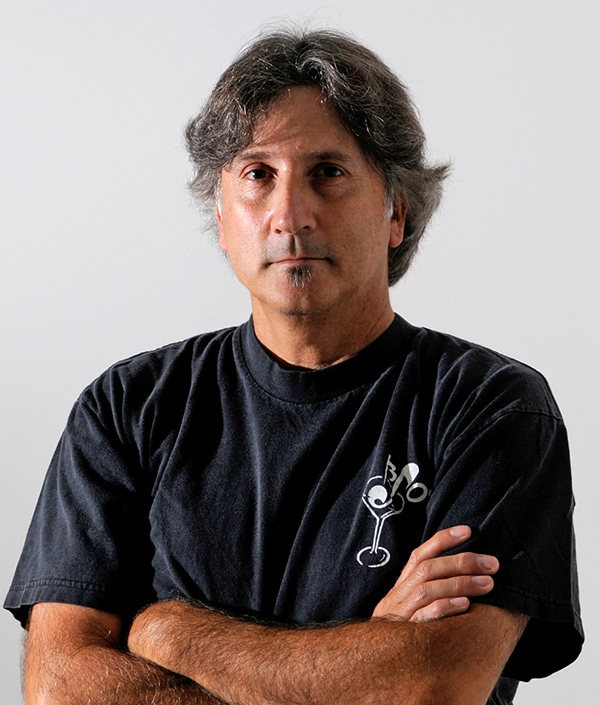
 BY NICK LICATA
BY NICK LICATA
fter being holed up for the past year or so and only being able to attend a few local car cruises, it was refreshing to get back on the road and head out to Louisville, Kentucky, for the 52nd NSRA Street Rod Nationals this past August. Now, if you’ve not been to this event, do yourself a favor and put this one on your bolt bucket list. If you are not familiar, this is no longer just a street rod event but is a mega car show that includes tons of great muscle cars. In fact, there are more muscle cars from the Chevy world here than any other brand. Yep, the massive Louisville Exposition Center is loaded with Camaros, Novas, Chevelles, Tri-Fives, and just about everything in between. And, in recent years, the NSRA has opened participant vehicles to ’92 and older, so if you are into later-model muscle cars, you’ll find those on the grounds as well.
It’s been a couple years since attending the Street Rod Nationals due to my taking a little time off from the magazine world and the fact that this stubborn Coronavirus going around put the brakes on most 2020 events.
This year’s NSRA Nationals was particularly special in that people were really looking forward to this event and getting back out with their hot rods and to check out the best vintage rides the Midwest has to offer. To some, getting back out to socialize with some like-minded hot rodders was just the ticket they needed to regain some sanity.
 Parts bin
Parts bin By Nick Licata
By Nick Licata
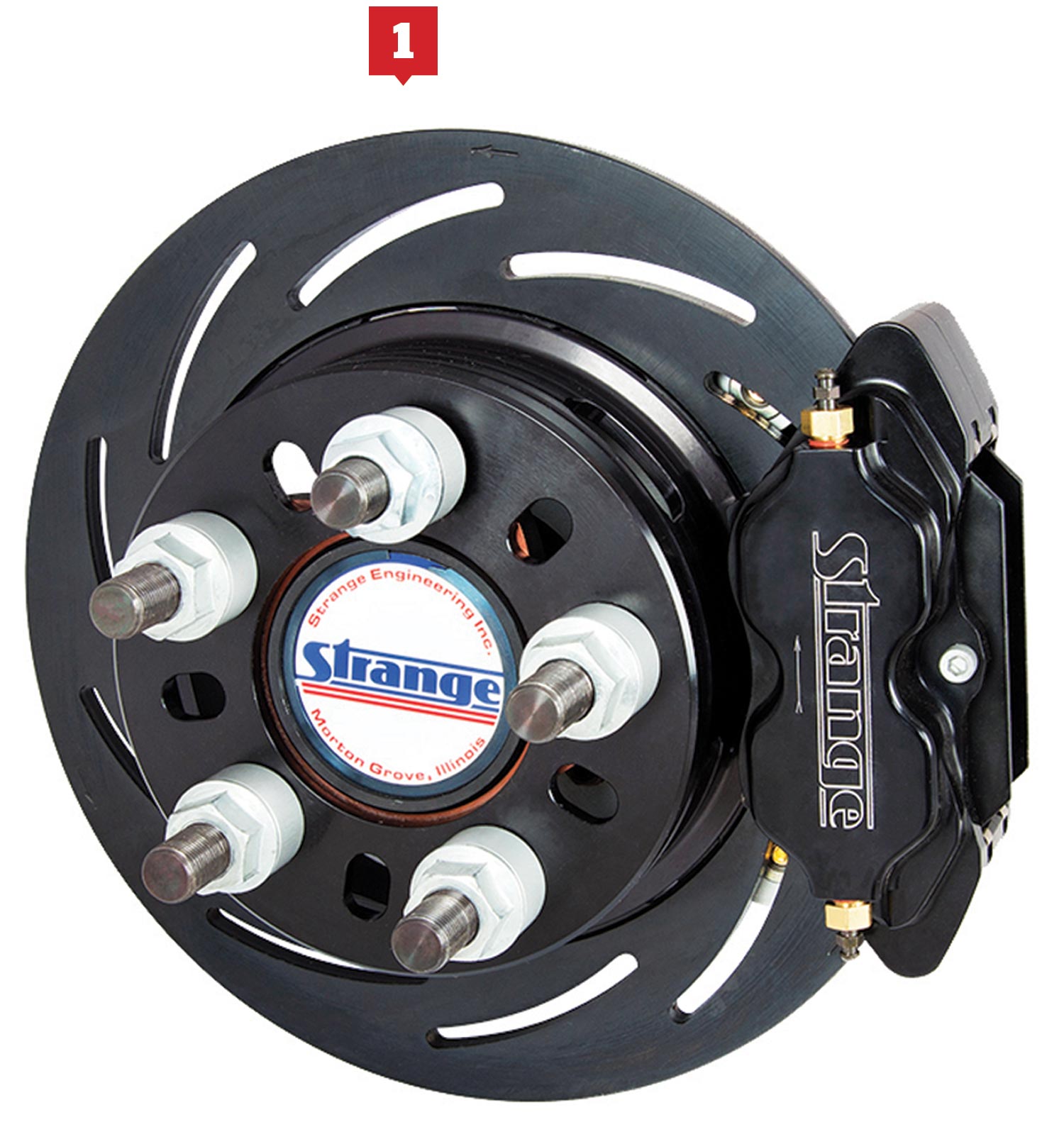

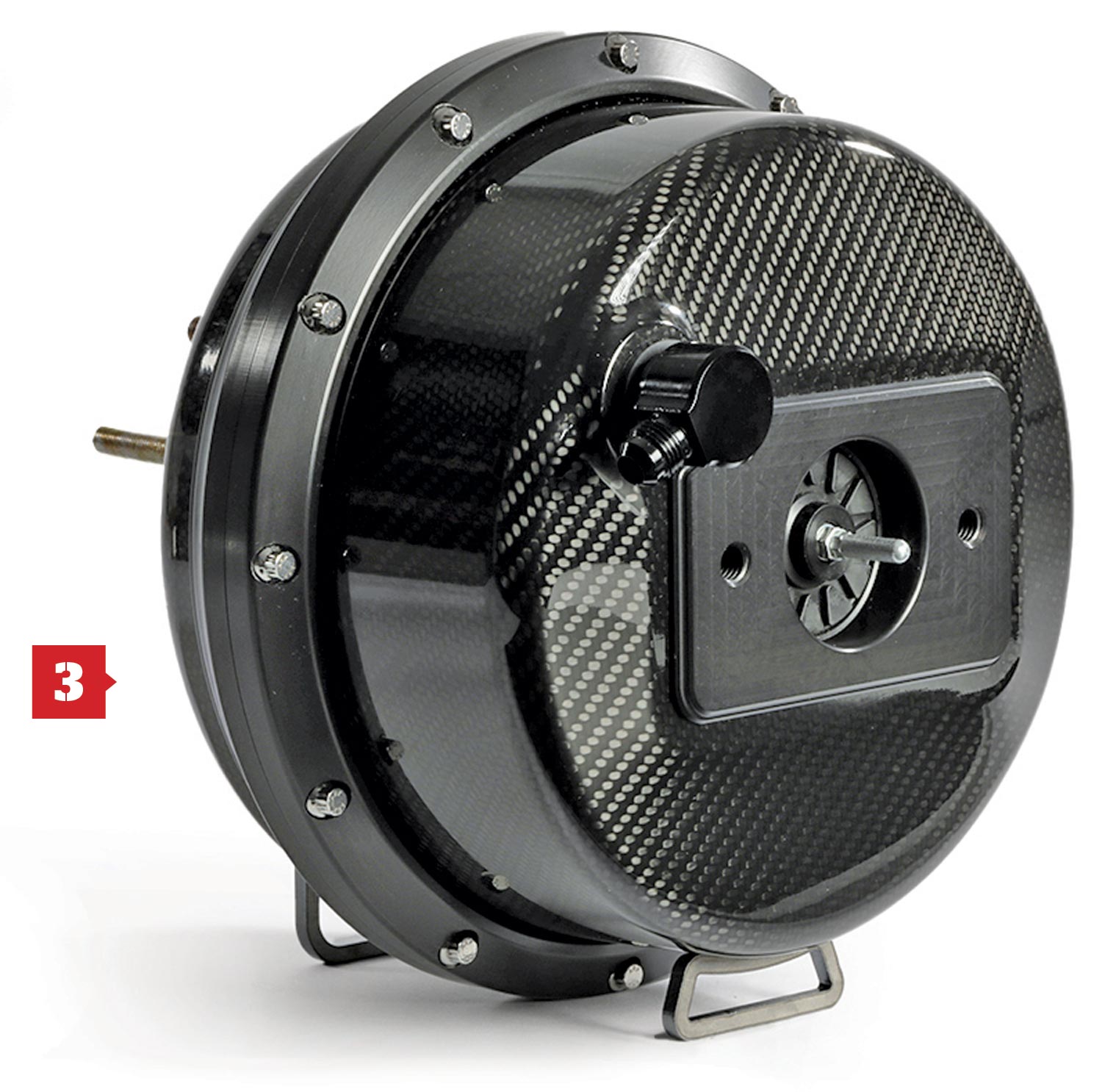
 CHEVY CONCEPTS
CHEVY CONCEPTS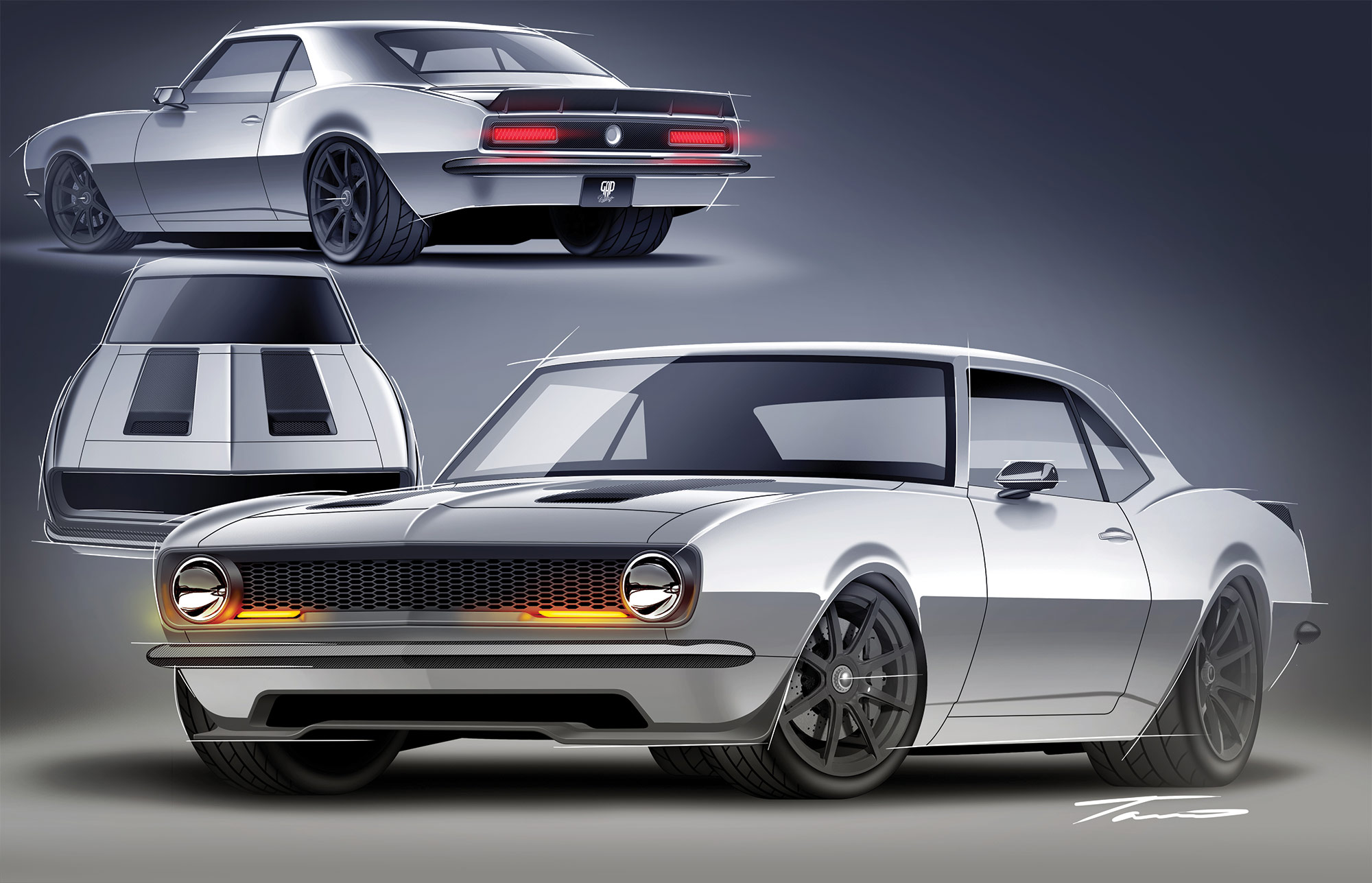

 Text and Rendering by Tavis Highlander
Text and Rendering by Tavis Highlander
ap Racing has tackled a wide range of full-vehicle builds, ranging from street cruisers to Great 8 show cars. Their depth of fabrication knowledge is significant; that will come in handy with their latest project, a ’67 Camaro.
Sitting on an IRS-equipped Roadster Shop chassis, the Camaro will receive some fab-heavy mods. A lower chin and splitter assembly was designed first and set the tone for many other pieces. The grille will feature a stretched hexagonal design with custom-made turn lenses nestled between the headlight buckets. Heat extractor vents in the hood will mimic racing stripes but will serve a functional purpose as well. Out back, the taillights are aftermarket ’67 Camaro but are bordered with thinner bezels than stock. There’s bound to be more interesting tidbits about this build, but you’ll have to watch for the finished product to see it.
 FEATURE
FEATURE
 Photography by Wes Allison
Photography by Wes AllisonLike many of us who grew up in the ’70s, playing with toy and model cars were the gateway to one day having the real thing. “As a kid, I loved playing Hot Wheels with all the neighborhood kids and my two brothers,” Doug recalls. “We’d play with those cars all day long.”
 TECH
TECH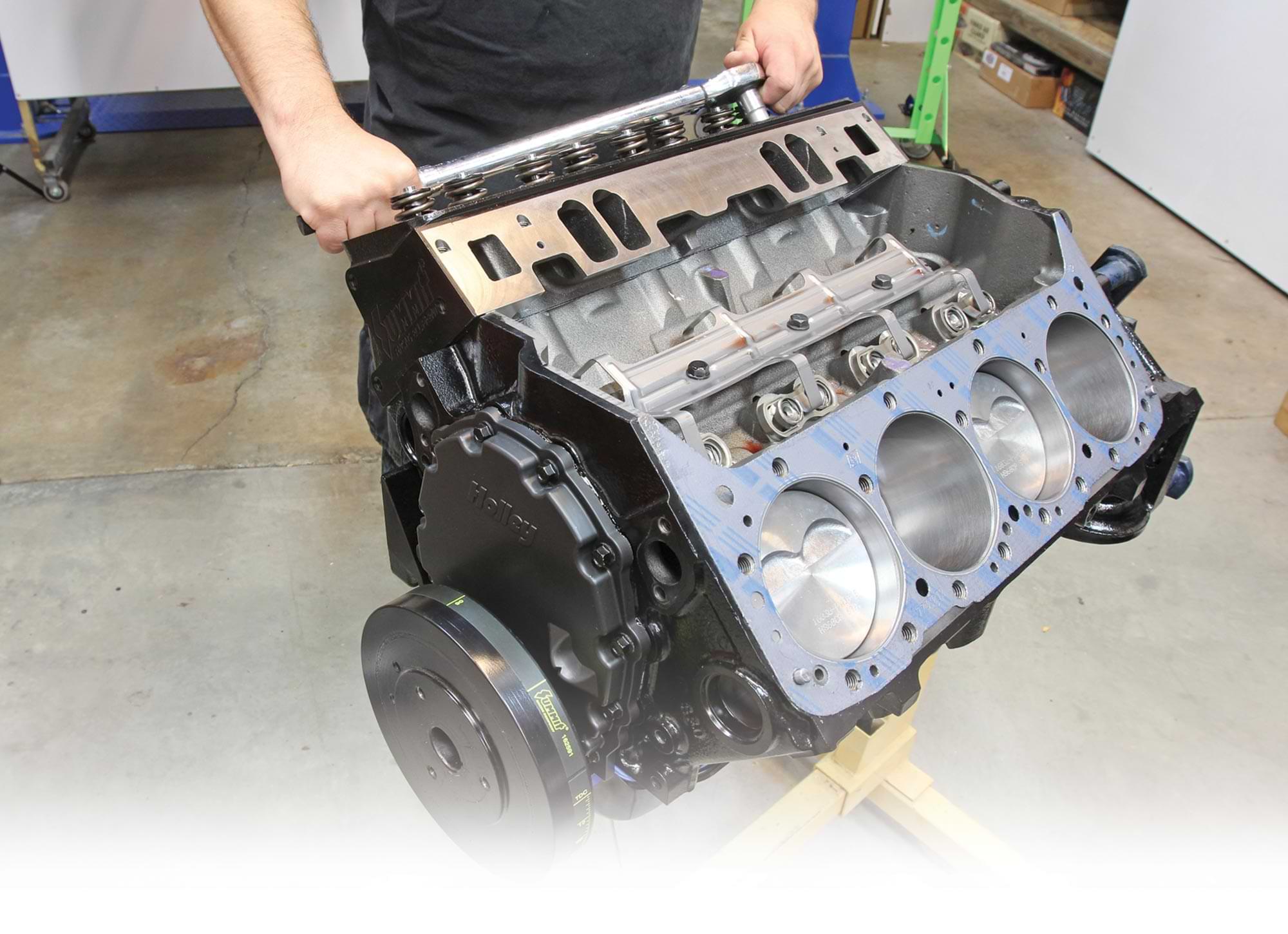
 Photography by The Author
Photography by The Authorhen we left off last month, our short-block Chevy engine was assembled and we had determined what we needed to look for when it came to cylinder heads (67cc combustion chambers). Half the valvetrain components were also in place (cam and lifters) but we still had yet to choose rocker arms and measure for pushrods. In addition to determining those components, we also needed to check the piston-to-valve clearance once the cylinder heads and related valvetrain components were on-hand.
To top off our budget build, we chose a pair of Summit Racing cast-iron Vortec cylinder heads due to their reputation for being a great out-of-the-box design at an even greater price. The Vortec cylinder head design dates back some 30 years, but its cutting-edge design (for the time) still retains great performance characteristics, even putting many aftermarket heads to shame. Keeping with the updated/upgraded trend, we’ll be complementing the roller lifter/cam setup with a set of Summit cast-steel roller rocker arms, another great, budget-friendly upgrade.
While we were conscious to choose components that were friendly to the wallet, one thing that we did splurge on were component fasteners from Automotive Racing Products (ARP). Their fasteners are second to none, so it should come as no surprise that we chose to spend a little extra coin for those fasteners that count, namely main bolts, head bolts, and rocker studs.
 FEATURE
FEATURE Photography BY The Author
Photography BY The Author
or many years Paula Lewis had a problem—and it was one that she was desperate to fix. You might be asking what possible problem could she have had? She explains, “Since the first day I got my license I have always been a Chevy girl. My first car was a Camaro and as most who love Camaros, I always wanted a ’69.” While that might not seem like a problem, when she tied the knot, her husband, Matt, didn’t share in her appreciation for anything with a Bowtie. He was—and is—a hard-core Mopar guy and for her she states that “it was not a car that I was really into.” As the family grew, going to car shows became a problem for her because Matt’s ’67 Belvedere was tubbed and essentially a two-seater. Whenever the kids wanted to go she got bumped out of the passenger seat.
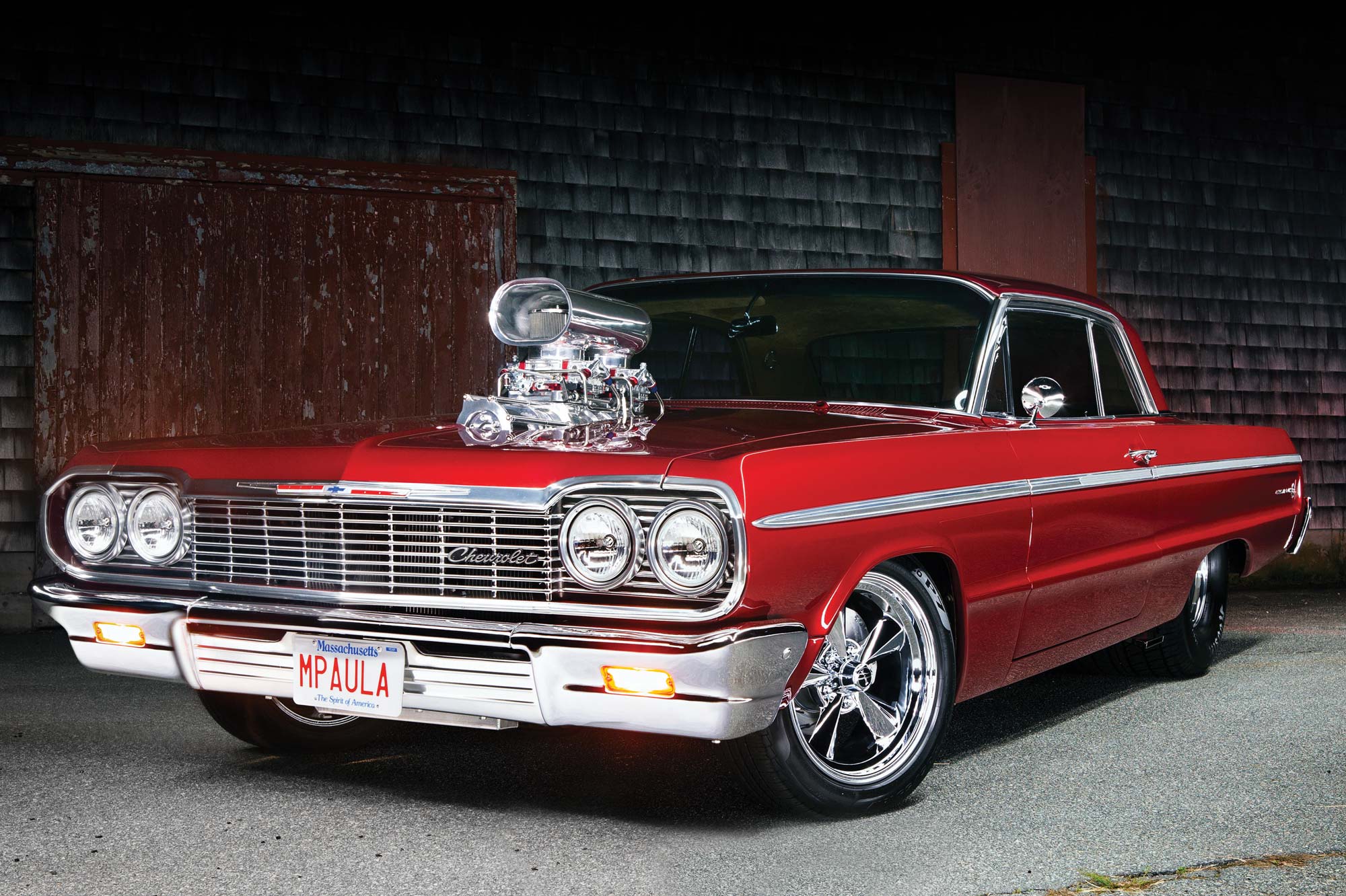
 TECH
TECH
 Photography by The Author
Photography by The Authorhen Jim Chamberlain brought his ’65 Nova to Kev’s Rod and Custom to have all-new outer panels fitted and gapped (except the hood and roof), he knew he wanted to do something about the huge stock bumpers. Initial discussions involved trimming the bottoms, but when a Camaro bumper was offered up against the body the decision was made to use a pair of them, but narrowed, smoothed, and tucked in closer to the body.
Once the bumper was installed to everyone’s satisfaction, work progressed on a custom-fabricated pan with recessed license plate to match the indentation in the bumper, the intention being for it to look like the Nova had come from the factory that way. We think it does, the owner thinks it does, so mission accomplished!
 FEATURE
FEATURE
 Photography BY The Author
Photography BY The Authorobbies come in all shapes and sizes. Luckily for us, the hot rod pastime proliferates in a myriad of different forms, making it a user-friendly activity for people of all ages, gender, financial status, and mechanical skill level.
Many of us jump into the fire at a young age and grab our own piece of the horsepower pie, whether it be in the form of peddle cars, go-karts, fullsize hot rods, or even smaller-scale modeling—slot cars and the like. So, however you want to slice it, once in, you’re now part of the hot rodding adventure. You just gotta strap in, hammer the pedal, and enjoy the ride.
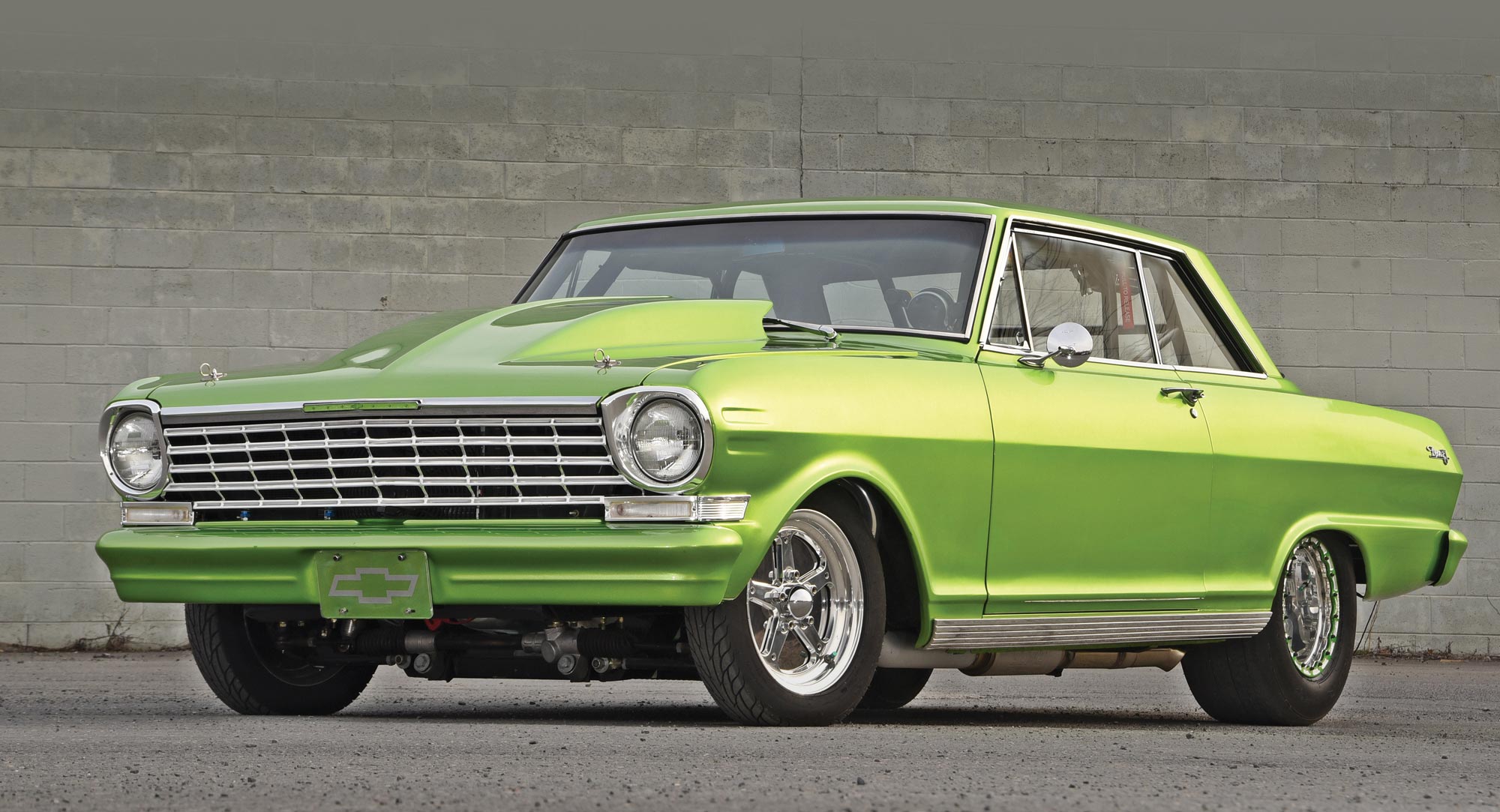
 TECH
TECH Photography by David Stoker
Photography by David Stokerhen the Chevy II was introduced in 1962, it was targeted as a smaller, economical choice compared to the fullsize cars available. Sure, there was the futuristic Corvair with its rear-mounted, air-cooled engine, but the Chevy II provided a more traditional approach to transportation. It was designed as basic automobile to compete with the Ford Falcon. In short, the Chevy II was all about basic transportation.
The first generation of the Chevy II continued on the economical tract, though it did receive the Super Sport option in 1963 and a V-8 was made available the following year. There were even gauge packages available from the factory as Chevrolet added more styling cues for the Nova. Strangely enough though, the second-gen models did not have an option for gauges. They were offered with increased performance and power, but no factory gauges. Even the 350hp L79-equipped models had no engine instrumentation (however, a clock was added on Super Sports!).
So, back in the day, if you cared about engine vitals, a set of gauges had to be hung under the dash. Today, however, second-gen Nova owners can easily update their dash with a full set of gauges along with a tach thanks to Classic Instruments. Their new ’66-’67 Nova gauge assembly is a direct-fit package that includes fuel level, voltage, oil pressure, temperature, and a tachometer.
 FEATURE
FEATURE
 Photography by Matt Lankford
Photography by Matt Lankfordn 1967 gas was 33 cents per gallon, the first successful heart transplant took place in South Africa, Super Bowl I was played at the Los Angeles Memorial Coliseum between the Green Bay Packers and the Kansas City Chiefs (Packers won, 35-10, by the way), and 403,963 variations of the Chevy Chevelle rolled off GM’s assembly lines with 11,695 of those being two-door sedans. Of those, only 1,903 were armed with V-8 power. C’mon people, what were you thinking? We get it. Most people were pulling in an average of $7,300 per year, so practicality was more important than burning rubber in a new midsized auto, and the Chevelle 300 was the no-frills base model designed to accommodate those budget-minded folks. It came with minimal chrome exterior bits and a very pedestrian interior that featured vinyl-trimmed bench seats, vinyl door panels and headliner, and vinyl-coated rubber floor mats and not much more. Well, at least there were close to 2,000 people who chose performance over practicality. To those slightly irresponsible horsepower hogs, we salute you!
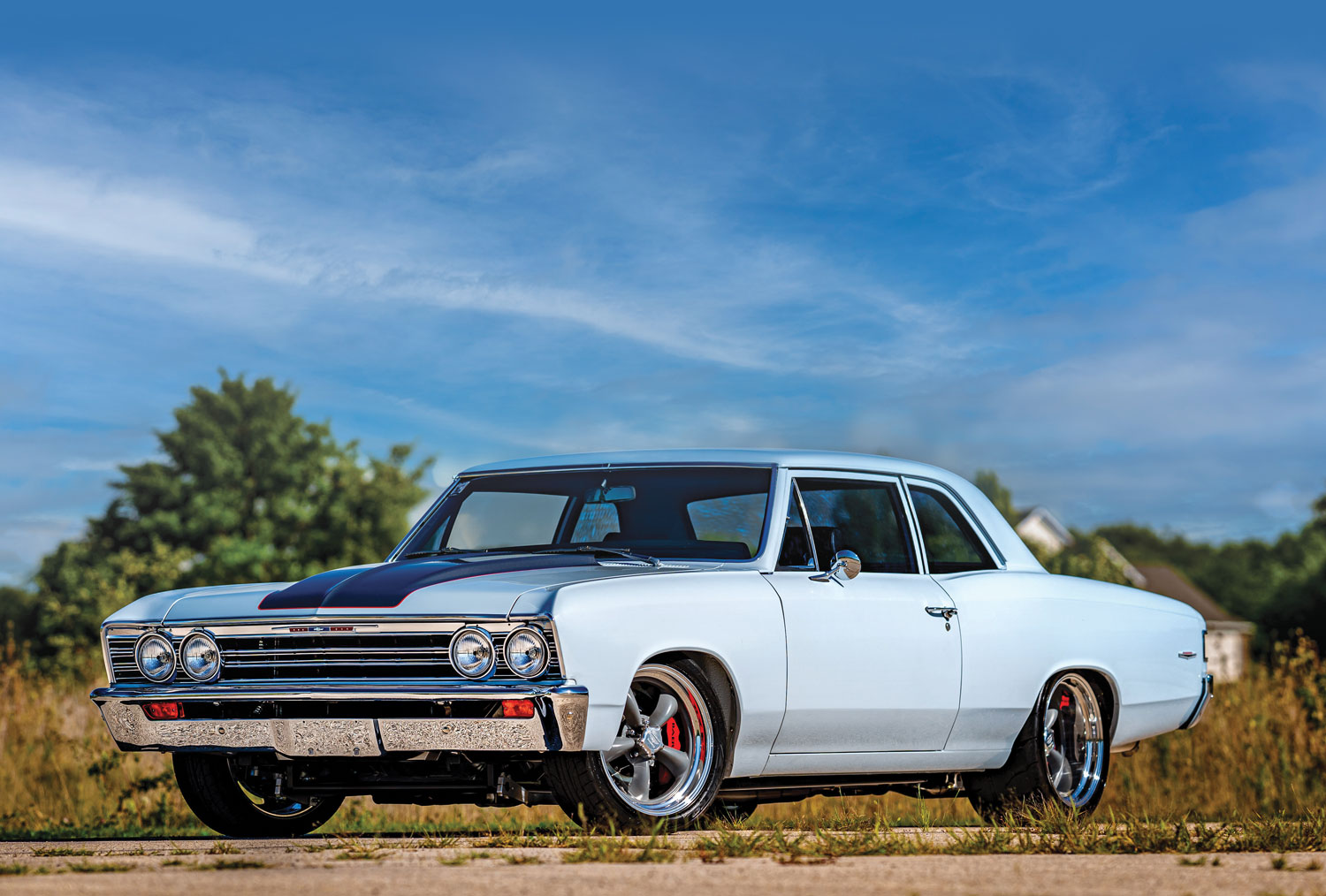
 TECH
TECH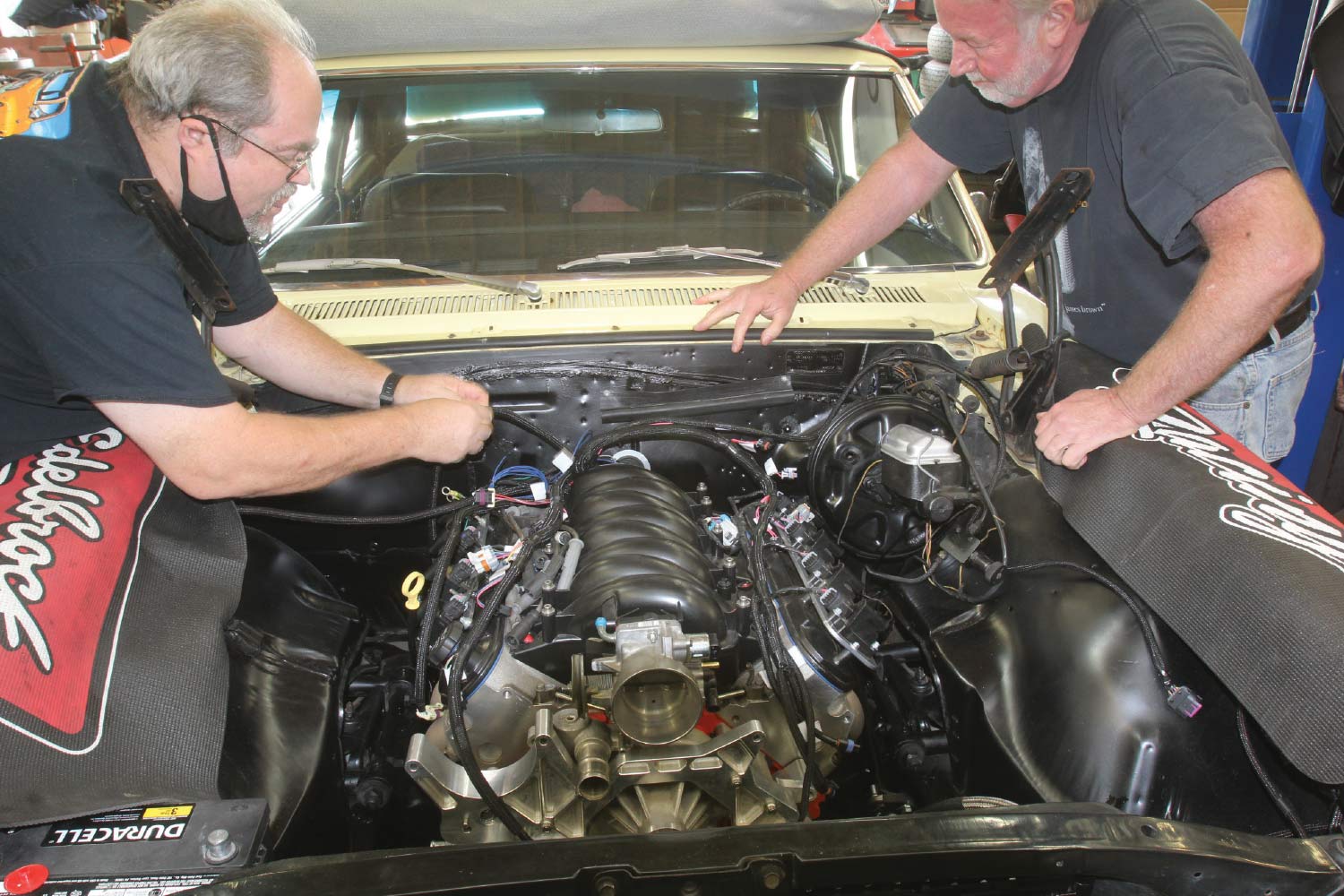
 Photography by the Author
Photography by the Authorn Part I of our story, Eric Rosendahl wanted a 5.7L LS engine in his ’67 300 Chevelle that could easily be a daily driver. We bolted in the engine along with a fresh 4L60E. The rest of this story will document all the subsequent changes and fixes we had to create to bring this plan to a climax. The engine is really just a breathed-on Gen III LS truck drivetrain cloaked in a ’67 Chevelle 300 sedan body or, the best of both late-model efficiency and a cool muscle car image. We have to admit that we were in such a hurry to drop the LS in place that we didn’t shoot any photos of the install, which is why you won’t see the classic image of the new LS going in–we just plain forgot! But you’ve seen the photo a dozen times in different scenes, so it’s no great loss.
With the new engine and trans in place, there were at least 500 details to work through. While it might appear that the PSI engine wiring harness would be a challenge, that turned out to be the easiest as the connectors are simple plug-ins. When we eventually tried to fire the engine, we discovered our take-out injectors were junk. Rather than mess around with cleaning parts that might not be salvageable, we invested in a new set of Holley injectors. This required converting the injector harness from the factory Multec injectors over to EV6, but that we handled by splicing new connectors on the existing harness.
With the engine in place, we mounted the Lokar throttle pedal and attached the cable to the intake with a simple, homemade steel bracket. With the radiator and electric fans in place, Rosendahl spent a half day of bending and flaring 5/16-inch hard line tubing to connect to the existing radiator trans cooler along with a small auxiliary trans cooler. While we were under the car, Rosendahl also purchased a pair of Hooker lead-down pipes for a second-generation Camaro (the early Chevelle pipes were not available at the time) that worked with a minor tweak.
 feature
feature
 Photography by The Author
Photography by The Authort’s hard to pull off the sleeper look with a car that most people consider a muscle car. The ’72 Chevrolet Chevelle seen here certainly fooled us on first inspection, but all bets were off when we saw it make a pass down the dragstrip on a heavy dose of nitrous oxide. Shannon Medley bought the car several years ago and built it as a fun project that he could drive on the street and take to the track. When he bought it, the car was so nice that he hated to make it a serious race car, so he did what he could to retain the car’s original appearance. That’s part of what plays into the car’s sleeper theme—green on green with a bench seat isn’t exactly the most common go-fast combination.
Shannon has toyed with several different wheel-and-tire combinations on the Chevelle and has run a best of 6.32 at 106 mph in the eighth-mile on a set of Weld Draglite wheels and Mickey Thompson bias-ply slicks. This combination totally ruins the sleeper look, so he rarely runs it, even though it’s a 1/2 second quicker than the sleeper whitewall and hubcap setup. By the way, the whitewalls are just painted onto a pair of tiny Mickey Thompson 215/60R14 drag radials. He used stock 14×6 steel wheels and full hubcaps, which are bolted into place for safety. The car ran consistently in the 6.80s with the whitewalls. Shannon has also worked hard to get the car to perform well on regular street radials. He’s tested numerous times with the car and has learned the proper launch technique and the right moment to lay the nitrous to it. His best effort on hard street radials (275/60R15 Futura) has been a 7.10 at 102 mph.
 EVENT
EVENT Photography BY The Author
Photography BY The Authorn its 27th trip to Louisville, the 52nd NSRA Street Rod Nationals went off without a hitch, considering the minor obstacles associated with the pandemic, which had no effect on the longstanding hot rod tradition. Considered the “grandaddy” of all hot rod events, “The Nats” remains king of the car shows. They show up by the thousands and just about every brand of hot rod and muscle car made it to the yearly extravaganza held at the Kentucky Exposition Center. And for us Chevy enthusiasts, there was a wealth of Bowtie muscle–classic Camaros, Novas, Chevelles, Corvettes, Tri-Fives, and big cars were all representing in huge numbers throughout the 1.2 million square feet showgrounds. Yep, the Street Rod Nationals is way more than just street rods–it’s a high-octane-fuel-burning hot rod and muscle car attraction and one we look forward to every year.
As usual with the Street Rod Nationals, there were plenty of highlights. This year we were especially excited to experience the inaugural Cacklefest in person, which featured some cool vintage dragsters and coupes. Witnessing Randy Walls’ ground-pounding Super Nova vintage Funny Car burn some nitro and wake up the Kentucky Exposition Center was most impressive. Another surprise was seeing the Doug’s Headers Corvair Funny Car contribute in the Cacklefest, complete with period-correct weed-burner headers making the car’s presence known from afar. The sound and smell of these cars on upwards of 90 percent nitro brought us back to the golden era of drag racing. For those too young to have been around these cars back in the day they got a taste of what it was like.
The Classic Instruments Pros Pick area featured some of the best hot rods chosen from previous 2020 and 2021 NSRA events and also included a number of cars selected from this event. It was a high-quality gathering of some of the best muscle cars and hot rods in America. As usual, there was plenty of Chevy goodness to admire, and in the end it was the ’50 Suburban built by Love Kustoms out of Burkeville, Virginia, that took home the Pros Pick of the Year award.
Advertiser
- ACES Fuel Injection87
- Aldan American73
- American Autowire57
- American Legend Wheels69
- Art Morrison Enterprises43
- Auto Metal Direct63
- Automotive Racing Products7
- Borgeson Universal Co.41
- Bowler Performance Transmissions87
- Classic Industries25
- Classic Instruments9
- Classic Performance Products4-5, 85, 92
- Concept One Pulley Systems87
- Dakota Digital91
- Danchuk USA11
- Duralast55
- Dynamat27
- Eddie Motorsports37
- FiTech EFI45
- Flaming River Industries29
- Gandrud Chevrolet83
- Granatelli Motor Sports77
- Heidts Suspension Systems77
- HushMat85
- John’s Industries85
- Lokar2
- National Street Rod Association71
- Original Parts Group83
- Performance Online35
- Powermaster Performance73
- Rod Shows65
- Scott’s Hotrods69
- Speedway Motors51
- Strange Engineering83
- Vintage Air6
- Wilwood Engineering23
- Year One85
 BOWTIE BONEYARD
BOWTIE BONEYARD

 Photography by The Author
Photography by The Authort’s no big secret that when Ed Cole and his band of mechanical geniuses designed the original ’55 Chevy small-block V-8 there was little–if any–concern given to minimizing exhaust emissions. Times were simpler and though major cities like Los Angeles experienced greenish clouds of incredibly unhealthy, noxious smog on a regular basis, little was done to address the fact that autos emit plenty of pollution.
So, in steps Uncle Sam to lend a hand with a series of increasingly stringent mandates forcing Detroit (and the imports) to clean up their respective acts. But, get this, before the U.S. government got serious in 1970 with the formation of the Environmental Protection Agency (EPA), five years before, in 1965, California led the charge with a mandate for new ’66 cars to get clean or stay out of the state. By 1967, California’s Air Resources Board was created and began its watchdog action.
In this month’s Bowtie Boneyard we’re at Turner’s Auto Salvage in Fresno, California, where a pair of ’66 Chevys exhibit some of the first emissions control equipment seen on American cars. If these items look strange to ’66 Chevy experts, it’s because they only appeared on California-bound models. The rest of the nation enjoyed less-complicated engine bays for a few more years.

